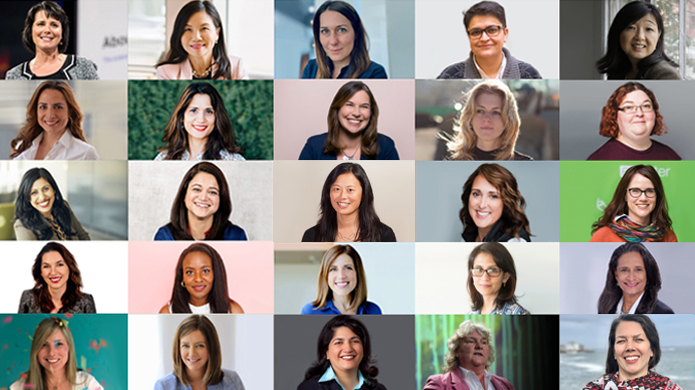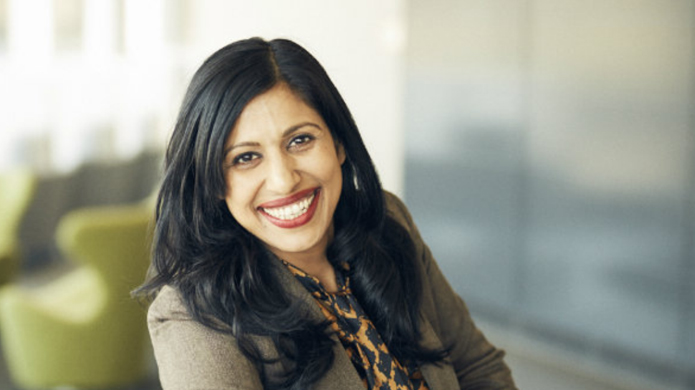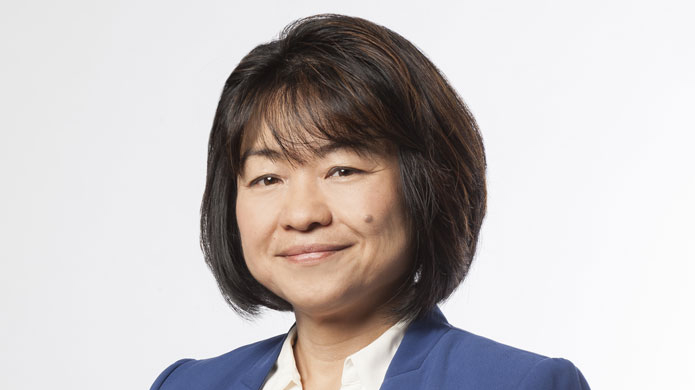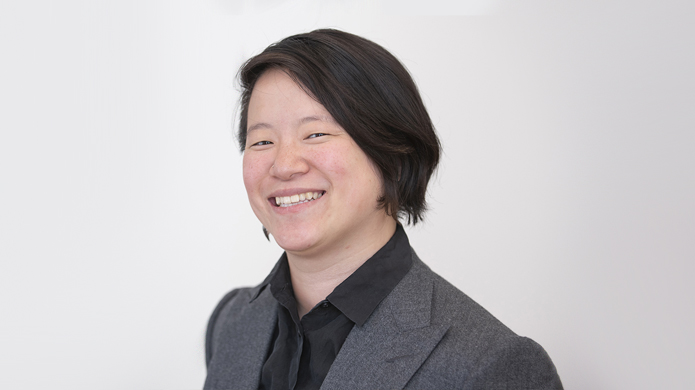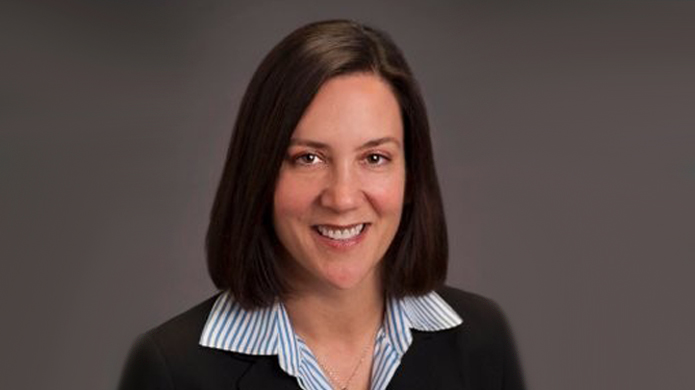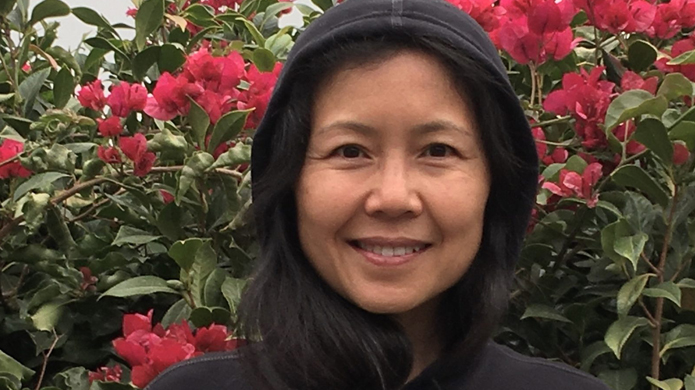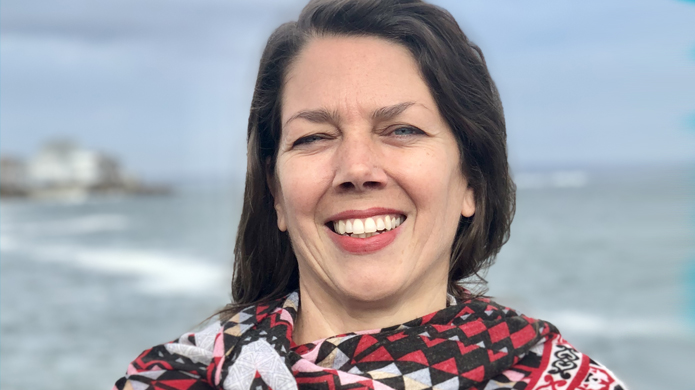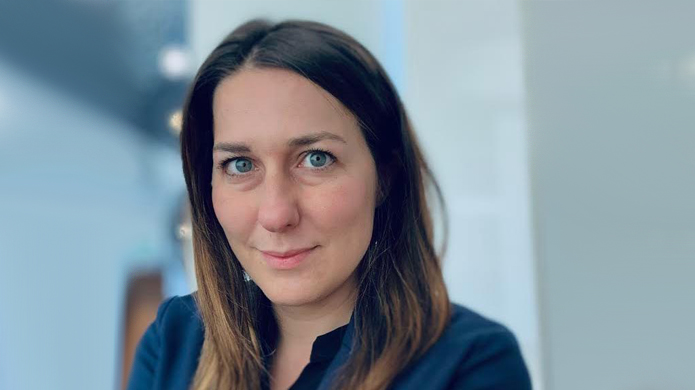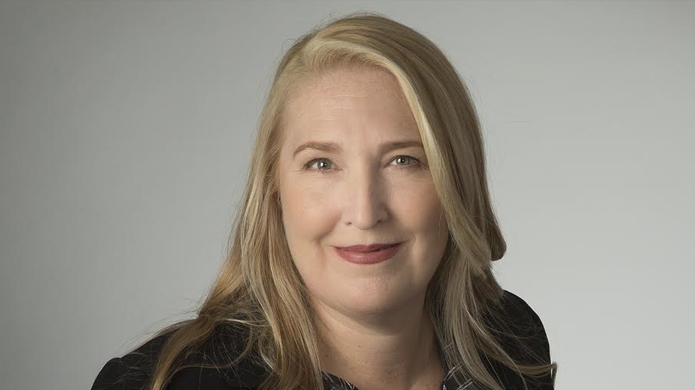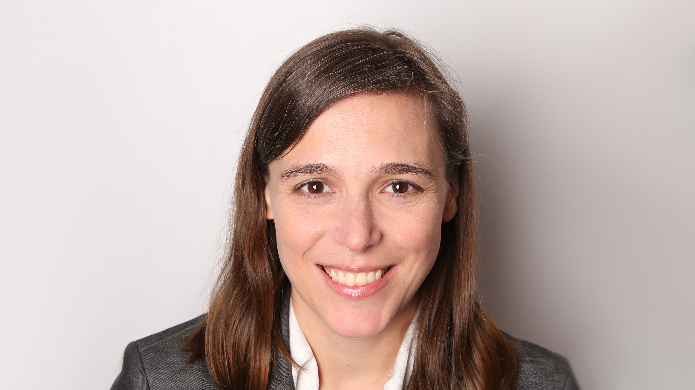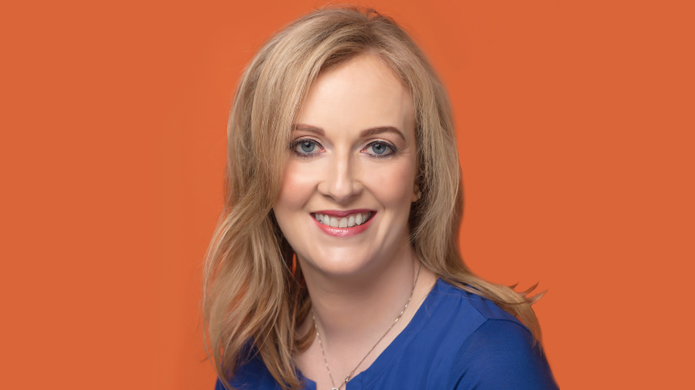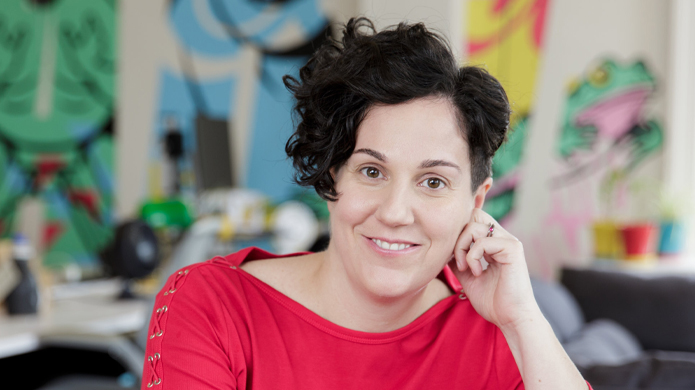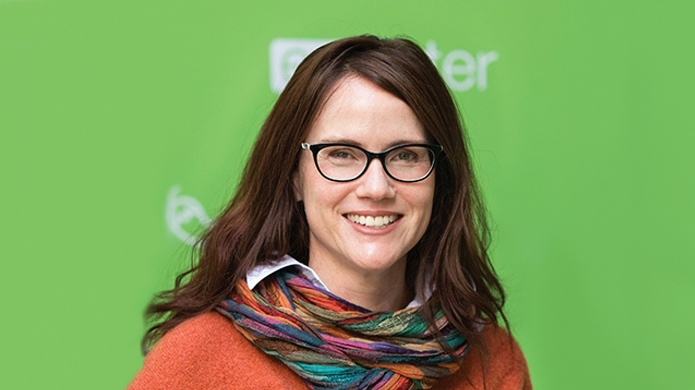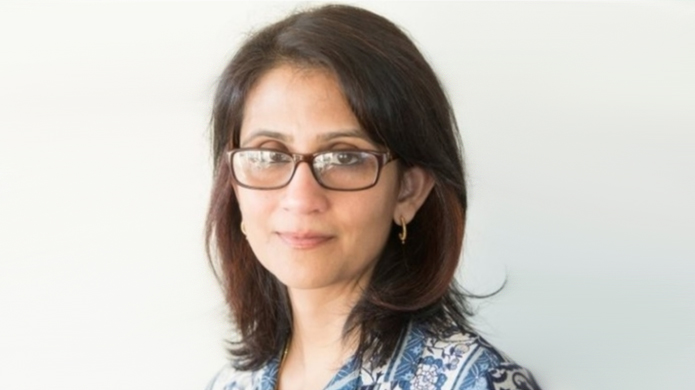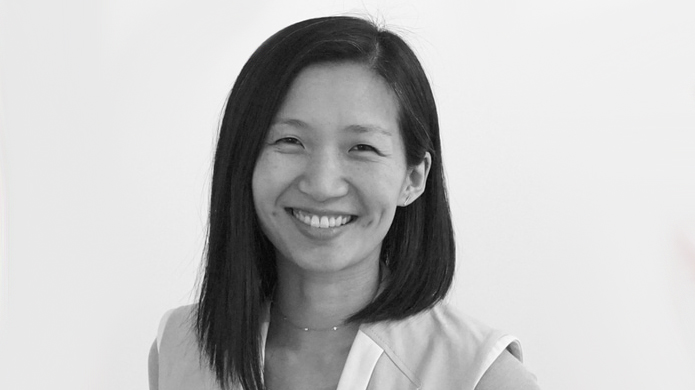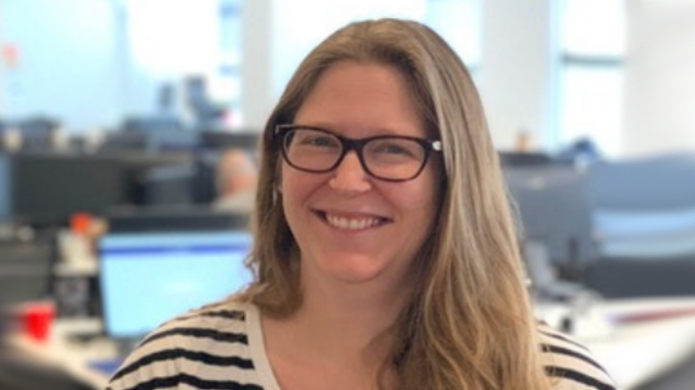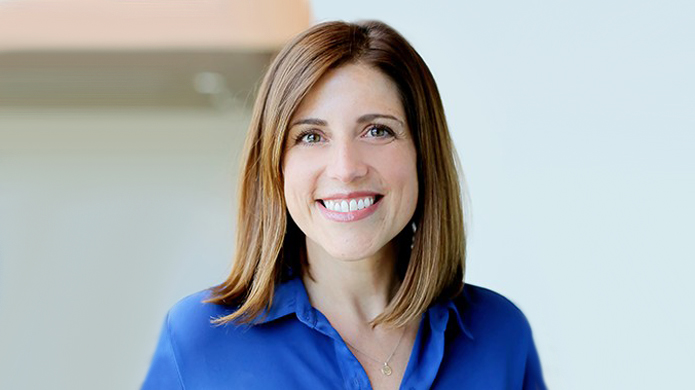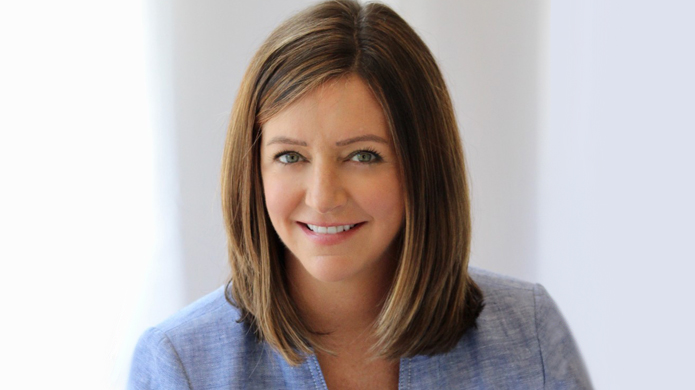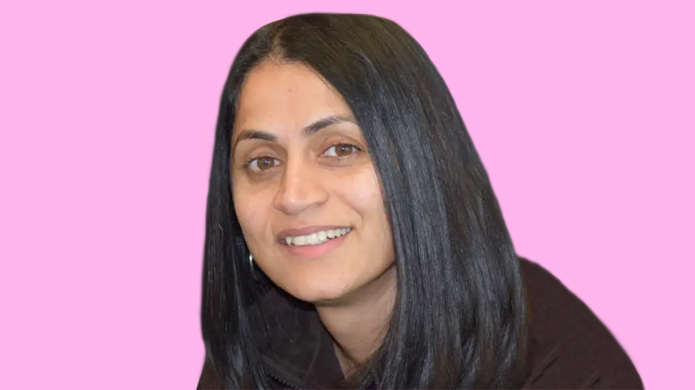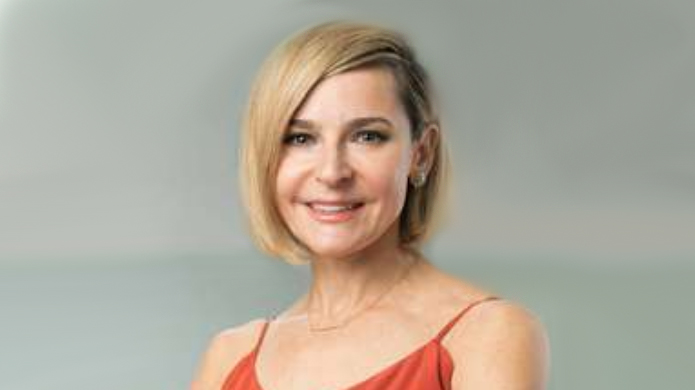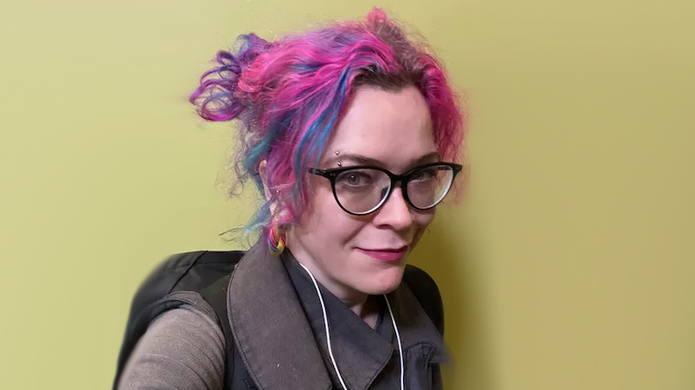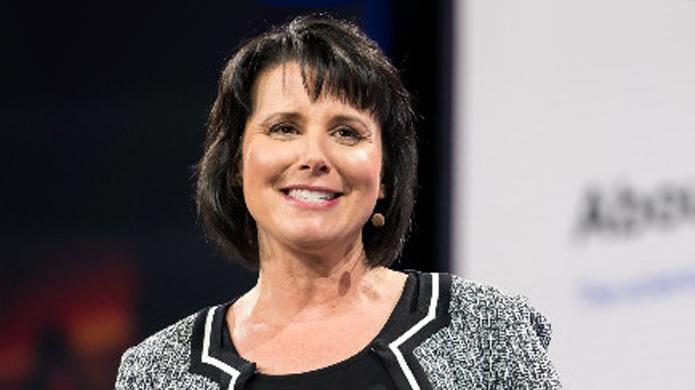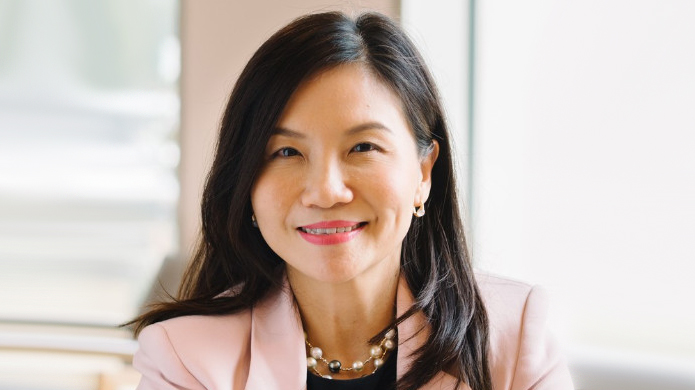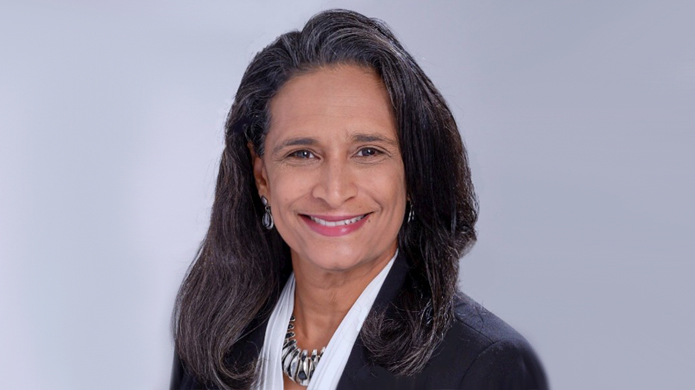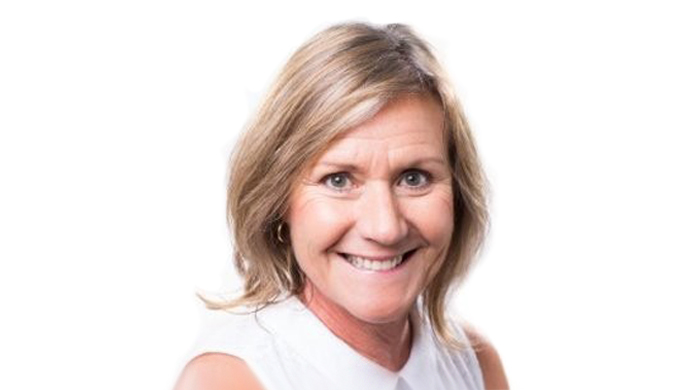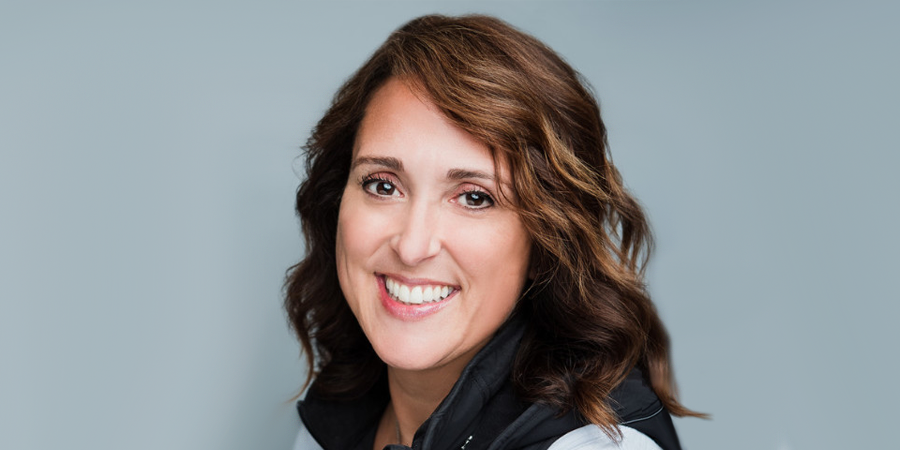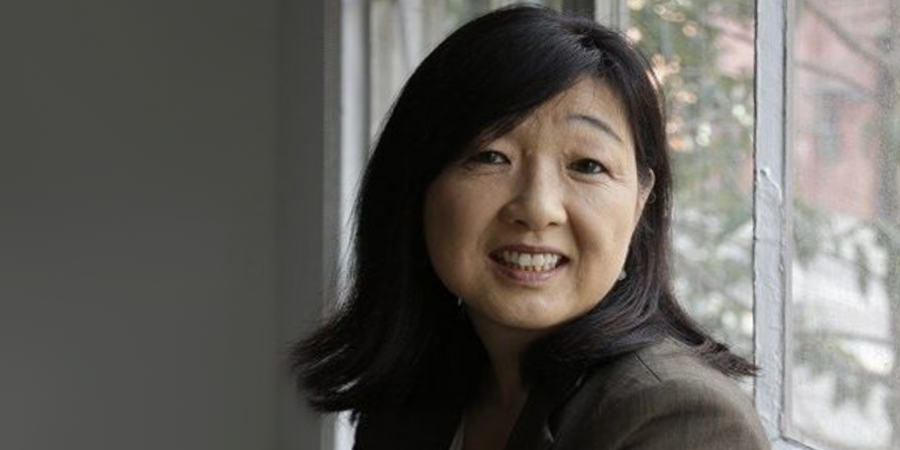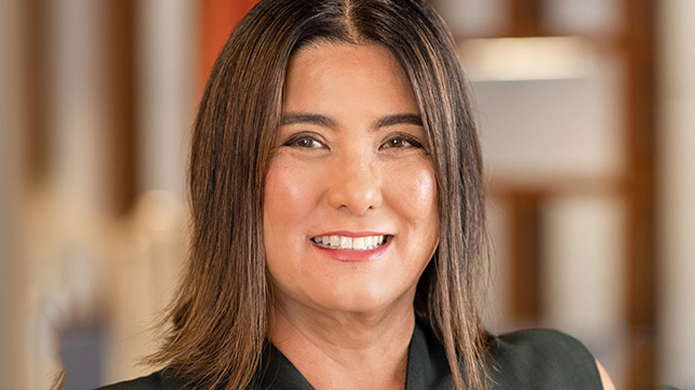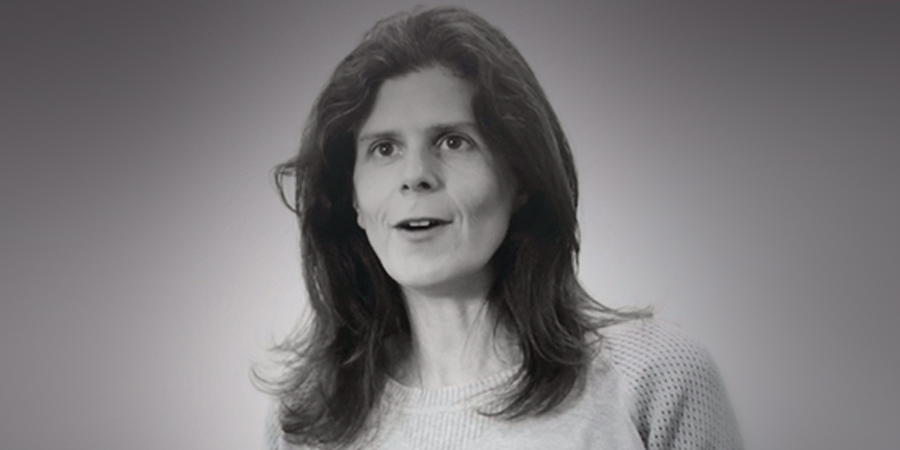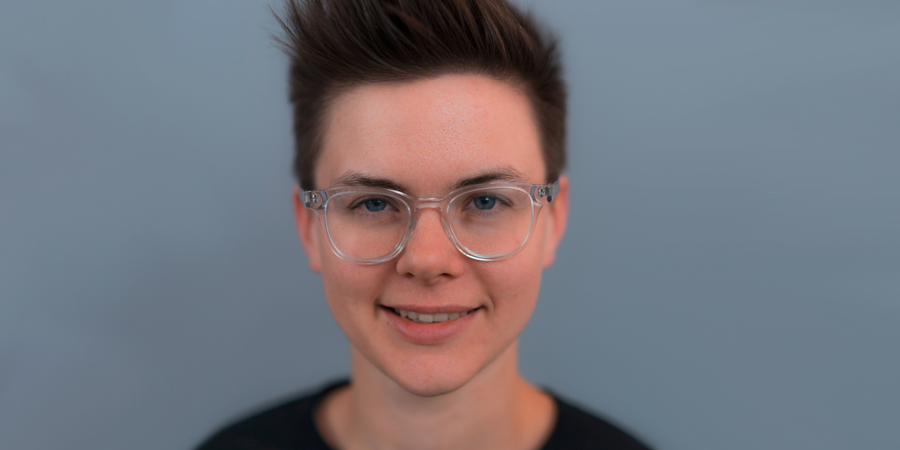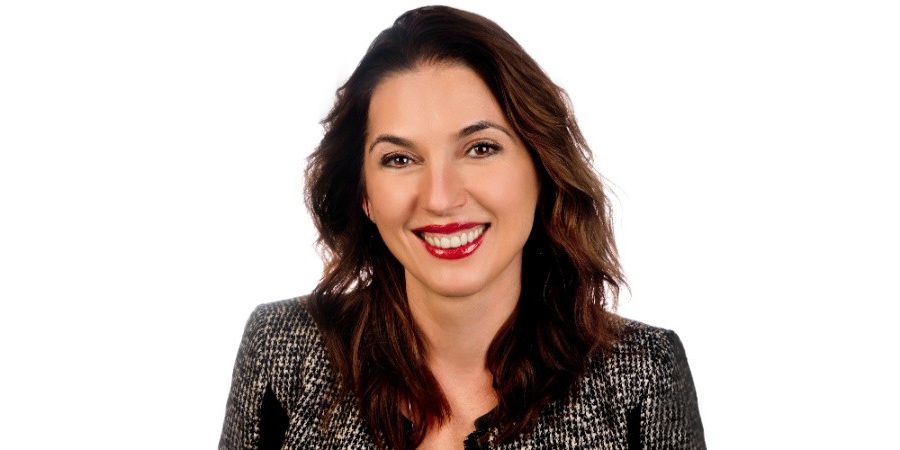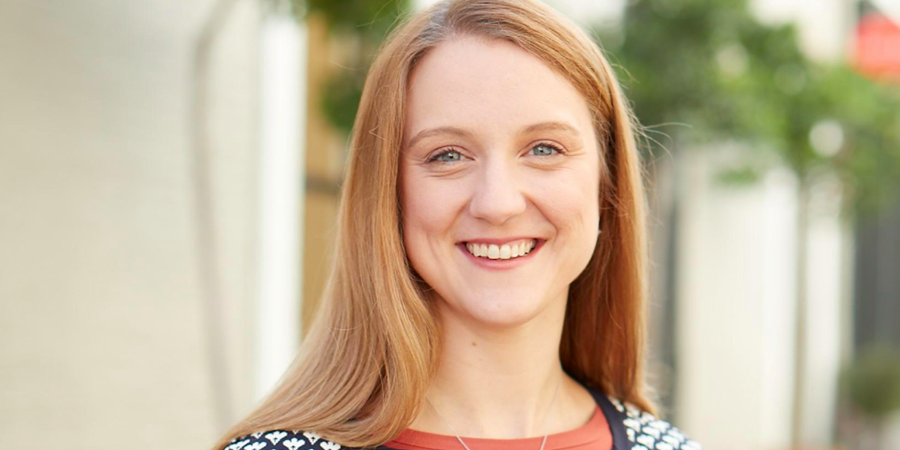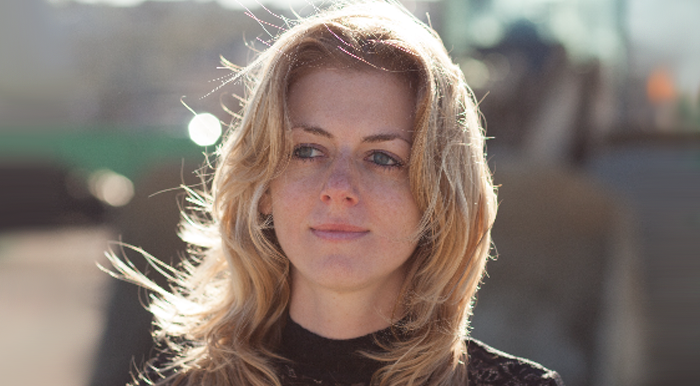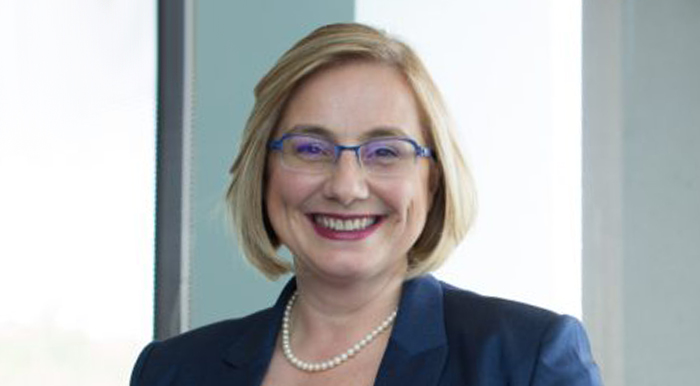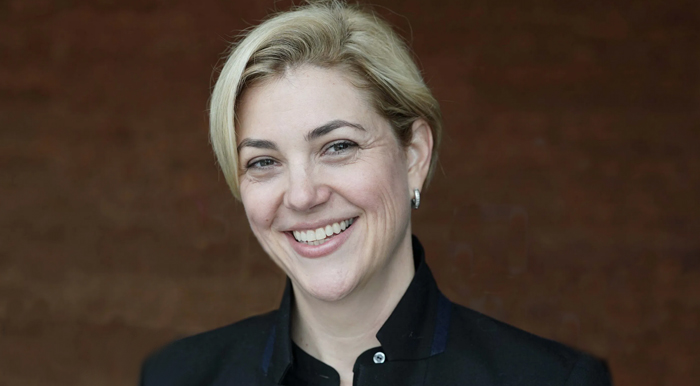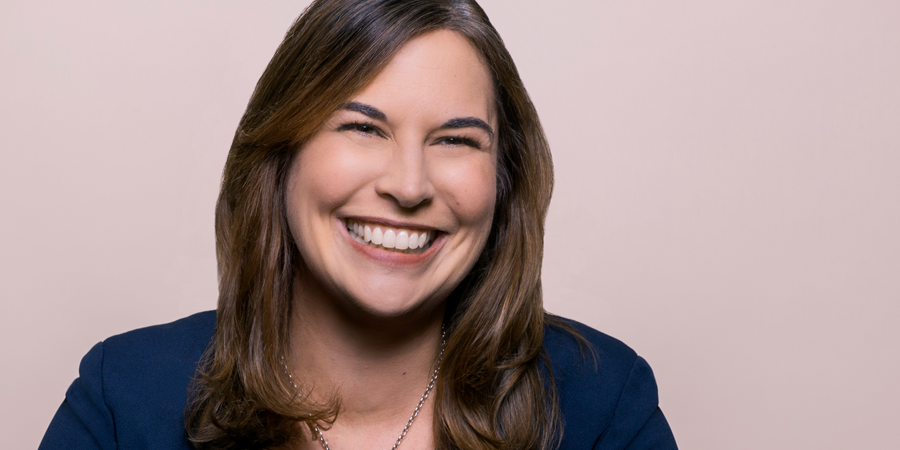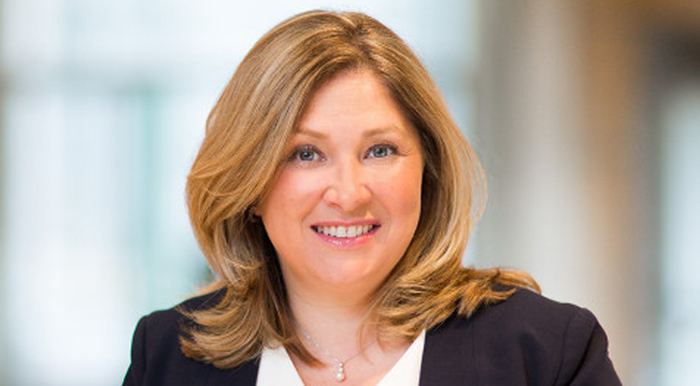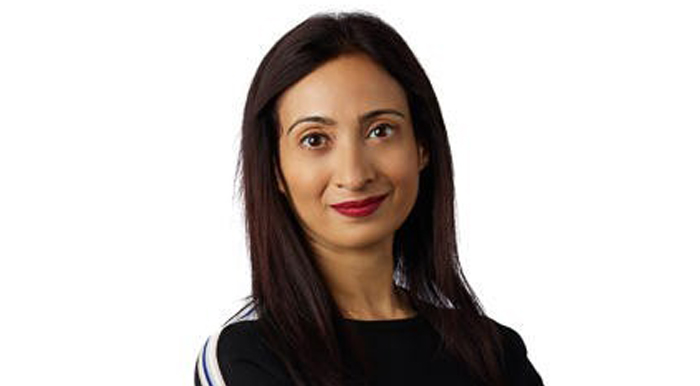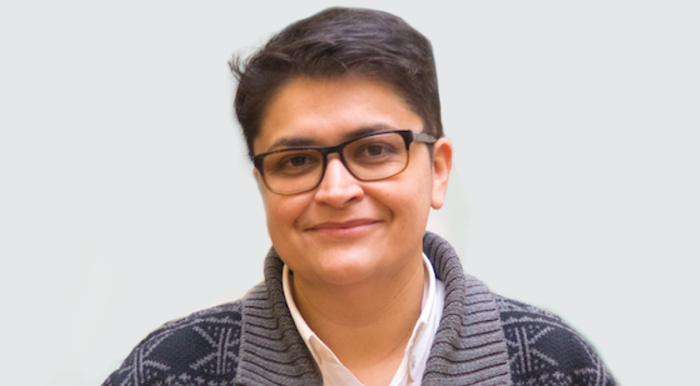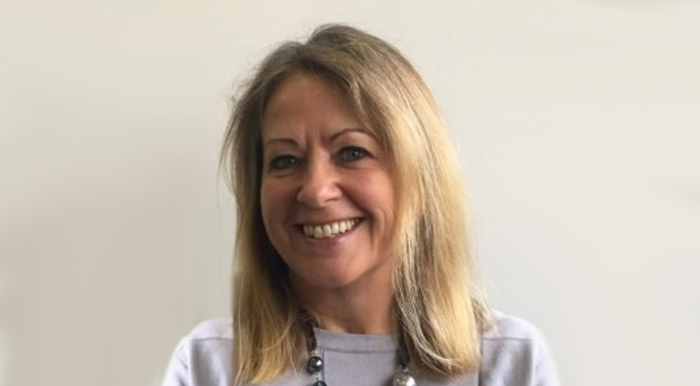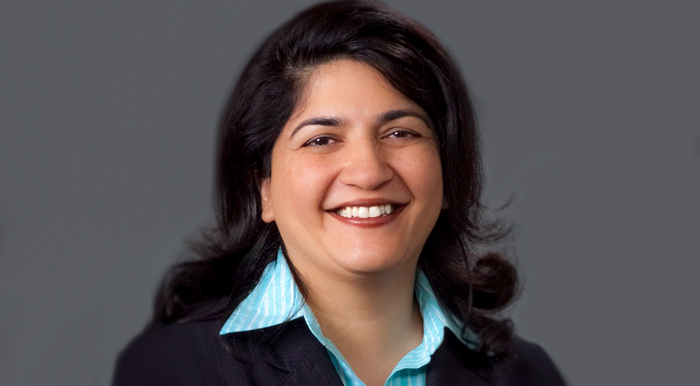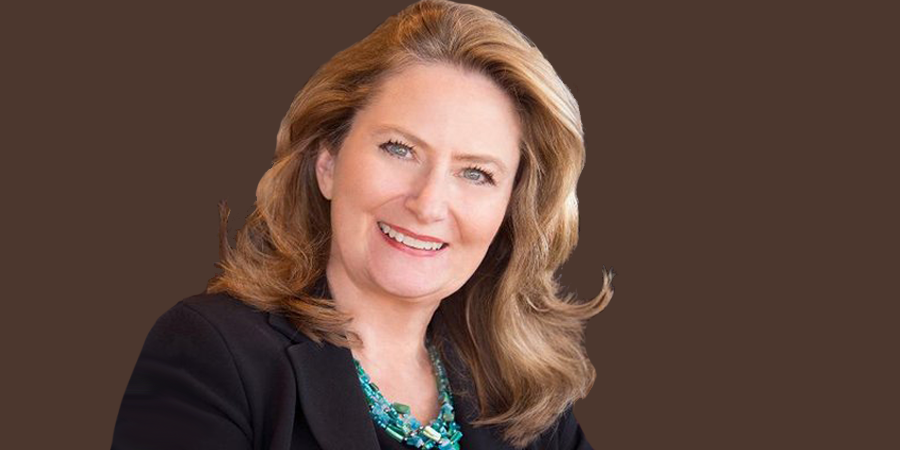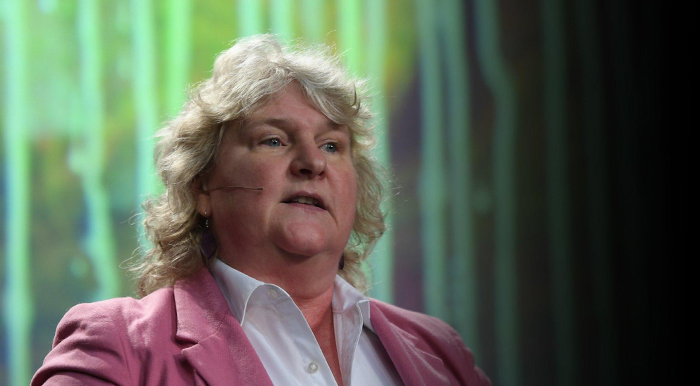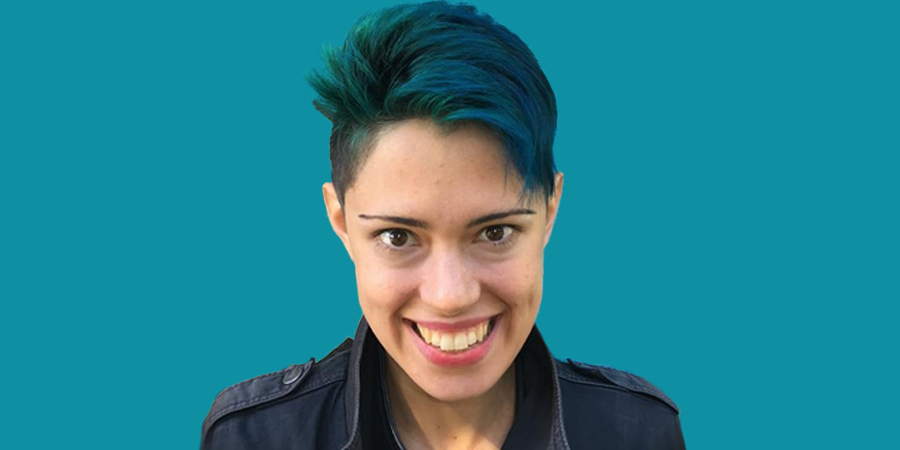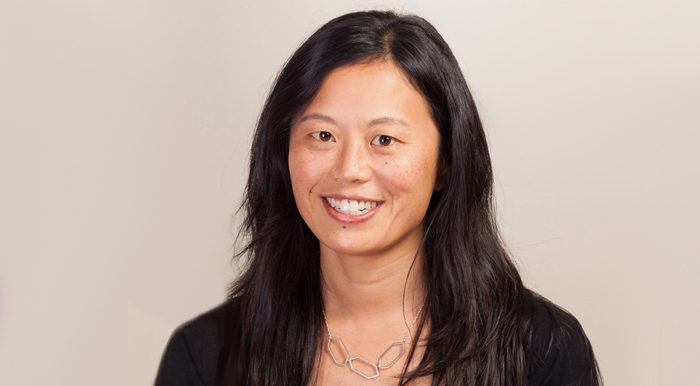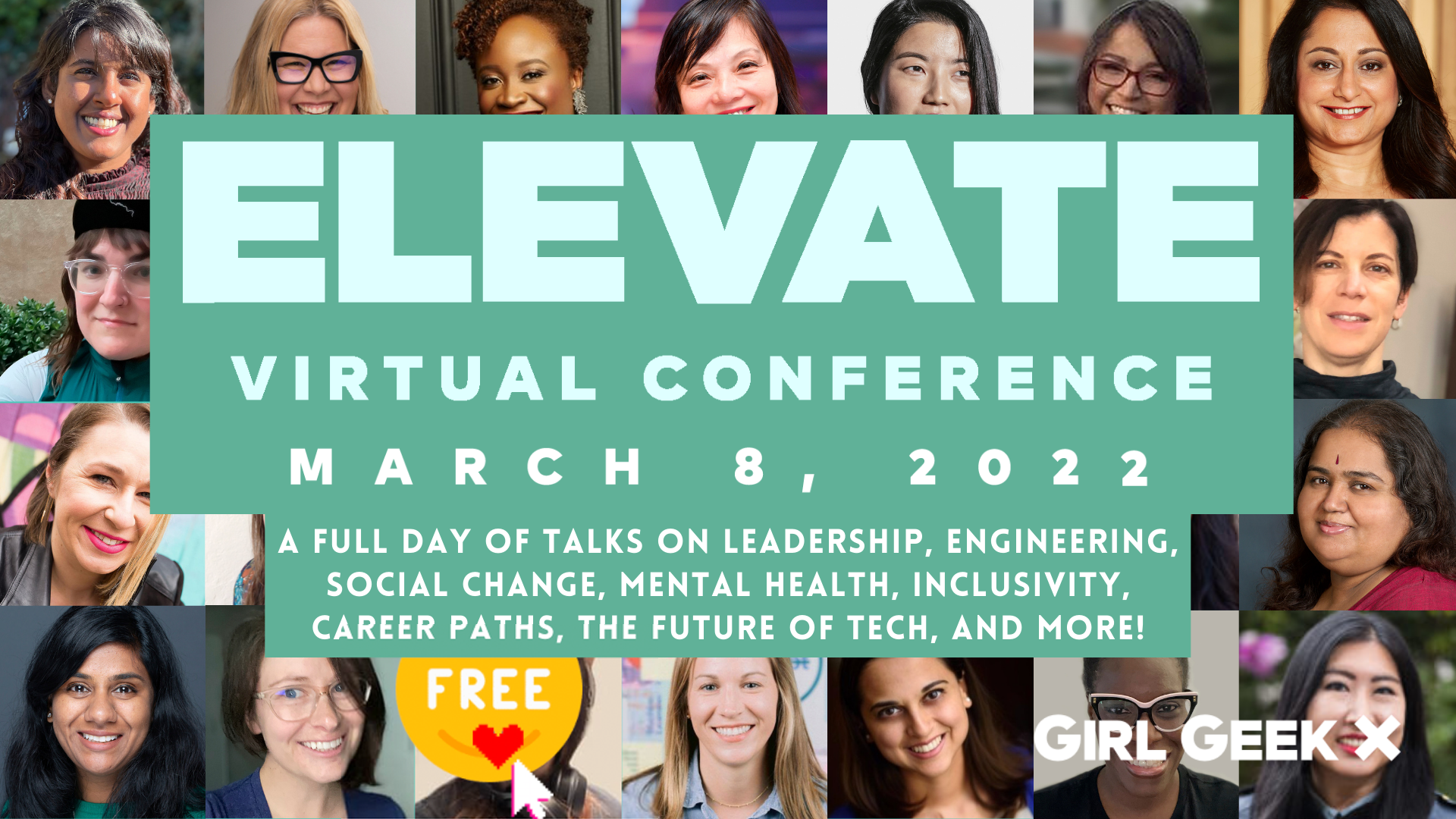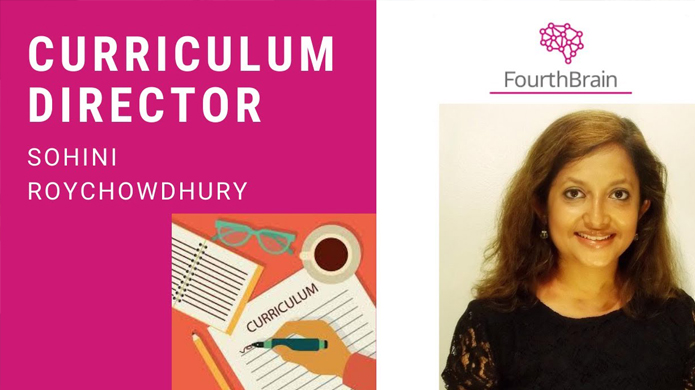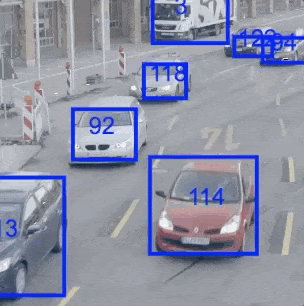Like what you see here? Our mission-aligned Girl Geek X partners are hiring!
- See open jobs at Confluent and check out open jobs at our trusted partner companies.
- Does your company want to sponsor a Girl Geek X webinar in 2021? Talk to us!
Transcript of Confluent Girl Geek Dinner – Lightning Talks:
Angie Chang: We have people joining us. Very exciting. Let’s just catch up, Sukrutha.
Sukrutha Bhadouria: Hi.
Angie Chang: Hey, good to see you.
Sukrutha Bhadouria: Good to see you, as well. Happy Sunday.
Angie Chang: I feel when we were talking about this Confluent, I’m like, “There’s a confluence of events.” We have the pandemic and now we have these California wildfires, and we’re all set to run at any moment, but we’re all here and we’re really excited to host this event with all of these amazing Girl Geek speakers. First of all, I wanted to first talk about why it is so important, and it means so much for women to be speaking about their expertise. When we started Girl Geek dinners, about 12 years ago, we were just so thrilled to have all of these women speaking on stage at places like Google and Facebook, and talking about their expertise, whether it was product design, product management, engineering, venture capital, entrepreneurship. We kept getting all these requests to have more of these events over and over again. Here we are, in 2020, hosting over 250 events, at over 150 companies. Since the pandemic has started, we’ve taken our events online, and we are so thrilled to be able to continue to do this work of bringing amazing women on screen, sharing their expertise and the challenges that they face in the workplace.
Angie Chang: Because as we know in the tech leaver study that the Kapor Center ran, the reason why women and underrepresented people leave tech is because they feel that there is a bias or there is some unfairness. We want to help people understand, and level the playing field so that they can succeed and they can continue to be awesome in the workforce, and with the help of a community. That’s really what we are. We have over 23,000 women now on our mailing list, who are excited to go to events like this and continue to support each other, and share what we learn so that we can help people who are earlier in their career. We don’t always mean earlier as when you’re out of college or anything, but I feel there are so many women that we talk to, who are trying to get back to the workplace after having a kid or two, or care taking responsibilities, and want to help be able to give these women a pathway and inspiration, and connections to make that step, and continue to work in this industry that we love, that’s called tech.

Angie Chang: It’s also super interesting because there’s so many types of job titles. I didn’t know until going to all these events that there were titles like—When I met Sukrutha, she was a software engineer in test. I was like, “Tell me about your awesome job of yours.” Now, she’s an engineering manager. It’s been a super interesting ride to learn so much. I think now, it’s 6:03, so hopefully everyone has joined us. It is our first… This is our second Confluent Girl Geek Dinner. We are so excited to have all of you here. My name is Angie Chang, I am the founder of Girl Geek X. It was formerly known as Bay Area Girl Geek Dinners. Over the years, we have actually expanded what we do beyond dinners, to podcasts, to our annual conference, to all of these different initiatives that we’re actually going to be talking about later. First of all, I’ll introduce Sukrutha.
Sukrutha Bhadouria: Hi. Thanks Angie. Hi, everyone. I’m Sukrutha, like Angie said. Girl Geek Dinners and now Girl Geek X, the goal is to bring us all closer together, and this is more important now with the pandemic, with all.. I would say, living at work, not even working from home anymore. We have difficult situations, all of us, where we’re not white boarding or in a conference room, and so that opportunity that we would have otherwise had, where we would have been able to network with people within our company, or even across companies, is getting harder and harder. The availability of opportunities, or the visibility of it, reduces when you don’t meet and talk to other people. This is why we’re excited that we’re able to even live in a world where we can do a lot of what we already were doing, virtually. We encourage you to get your companies to sponsor a Girl Geek, a virtual Girl Geek dinner, because with all the craziness of the week, you want to disconnect, and you want to be able to meet other people who are like you.
Sukrutha Bhadouria:That’s the feedback we would oftentimes get from people who would come to their events. They would tell us that it was such a great escape. They would come to these events, meet other cool people, and then feel energized and charged to go back and ask for what they need to do to get that next promotion, and get that next raise, and learn tactics on how to deal with the glass ceiling, or the sticky floor, or the broken rung, or whatever challenges that they might be facing. One of the big topics that keep coming up is the fact that we don’t always notice opportunities because we just don’t even know about them. Sometimes people are often offered opportunities just because they are the first person someone thinks of just because they’re right in front of them. These are things that we definitely deal with through all of our events. Before we go any further, Angie and I always ask this question. Who’s attending a Girl Geek dinner for the first time? Please comment in the chat below if this is your first dinner, virtual or not. We’d love to know.
Angie Chang: Also, we want to do a roll call, see where everyone’s dialing in from today. Berkeley, California here.
Sukrutha Bhadouria: Yeah. I’m dialing from San Francisco.
Angie Chang: Cool. I see people from the Bay Area. People were texting me talking about packing up their cars and getting ready to leave at a moment’s notice. Thank you for hanging in there with us.
Sukrutha Bhadouria: I’m seeing some interesting locations. Mexico City, Sydney, Singapore. Wow. I’m loving this. This is awesome. Auckland, New Zealand. The chats are going so fast I’m doing my best. I’m not a girl, that’s okay we welcome everyone.
Angie Chang: For sure. We do Girl Geek Dinners because we want to give women the opportunity to be on stage as speakers at these events, but they are attended by everybody. We like our allies, and we’re very inclusive at the end of the day. South Korea, thank you for joining us.
Sukrutha Bhadouria: Oh, that’s awesome. We’re getting more and more people telling us where they’re from. This is so fascinating to me, to see how the minute we go virtual, we’re able to reach more people, which is part of why we wanted to do our annual conference virtually. That’s why we dropped the tag Bay Area in the first place, because we were going way beyond the Bay Area at that point. Someone’s talking about how their car is packed and ready to evacuate if needed. Good luck and stay safe, everyone. Angie, what’s on your mind right now? Besides the wildfires and the pandemic and the heat.
Angie Chang: Actually, Sukrutha and I have been chatting, she’s been itching to apply to be a Tech Fellow. I looked into the opportunity and I was, “Sukrutha, it’s perfect for you. We could come up with a great talk for you.” At the same time, we get so many Girl Geeks who come to us, really excited to become speakers, who want to be able to share their story, figure out their own narrative, and to be able to be established as an expert or a leader, or a speaker. We’re actually putting together, right now, the beginnings of a program that will be launching this Fall, that we’re piloting for small groups of women who are like minded and with similar goals, to meet several times to help each other get to that next level, and create that narrative and establish those goalposts, so that they can go toward it and have accountability buddies. Stay tuned for that, we’re really excited. Let us know via email or Twitter, if you are interested in this. This is something that we are planning on announcing in the next month, so stay tuned.
Sukrutha Bhadouria: Angie and I were also talking about how, for me, I was consistently… Initially, I would have that one goal, and then I would go after it and then I would have this void. It was really important to me to continuously move the goalposts that I had in the first place, but also appreciate the one that I just accomplished. Think about that, think about your goals, but also appreciate how far you’ve come. Oftentimes, I feel once I passed the goal, I’m like, “Oh, that wasn’t that hard.” And I discount it, but it’s pretty impressive every time you look back to see how far you’ve come. Don’t forget to do that in respect to that regard, too.
Angie Chang: For sure. We are actually going to have to move on to tonight’s Confluent Girl Geek speakers. We have an exciting night of women giving lightning talks and then a fireside chat. Stay tuned for that. Our first speaker is Anna McDonald. She is going to… Sorry. Anna McDonald has over 20 years of experience, and she will be speaking tonight to us about how popular and necessary event streaming has become.
Anna McDonald: Hi, everyone. I’m going to go ahead and share my own screen here. All right. How’s that looking? Good?
Angie Chang: Looks great.
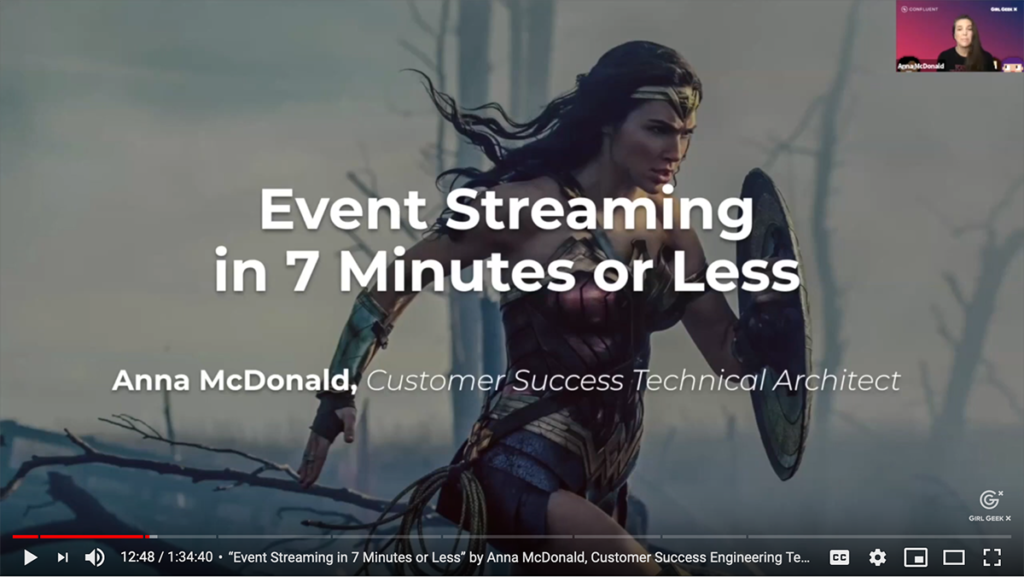
Anna McDonald: All right. Excellent. I’m here, I’m going to talk about event streaming in seven minutes or less. Hopefully, people will time me because I timed myself and I made it three out of four times. I am a customer success technical architect at Confluent. Hello. There we go.
Anna McDonald: Prior to this, I was a principal software developer at SAS Institute for 16 years, which is a super long time for most people to stay at one job. Then I met Kafka two years ago, I like to talk about her like it’s a person, but it’s not, I know that. I’m well aware. I’m working on it. And decided to work on it full time at Confluent. I’ve been here for almost a year, and I love it. I could not love it any more.
Anna McDonald: Other things about me, I love event streaming, integration architecture, and I take horrible photos. I like this slide because I just want anyone else out there who also takes horrible photos to know you’re not alone. That’s about me.
Anna McDonald: The way that I want to run this presentation is, we’re going to start and talk about three of the most popular patterns in event streaming. Then we’re going to talk about how you might bring that into your organization. And then we’re going to talk about once you’ve decided to do that, and you know what events to track, what goes into an event in terms of a schema. What’s important to track, no matter what. Let’s get started.
Anna McDonald: The first event pattern that’s pretty popular is event notification. And that’s where you just kind of throw out an event and that’s it, you’re done. This could be something like, “Hey, an address got updated.” Or, “Hey, an order was placed.” Maybe there’s something in your organization that you need to do every time someone places an order, no matter what. It’s very simple. It’s easy. It’s a great first step for eventing, and this is one of the main ways people get started into events.
Anna McDonald: The next one is event carried state transfer. That’s where you go one step further and you say something like, “Okay, I’m not only going to tell you that an address was changed, but I’m going to give you enough information about that change to let people downstream update, maybe a local cache, or a steet store.” That really becomes a more valuable event. Then the third one that people talk about quite often is event sourcing. Event sourcing is very, very wonderful, and very, very complex. It’s not a good fit for everybody. It basically comes down to tracking every single change that’s ever happened to an entity.
Anna McDonald: The way to know if you’re doing it is, is your state optional. However your application is maintaining state. Can you blow that away and then rebuild it from an event store? If you can’t, you’re not fully event sourced. This can be great if you want to time travel. Me, for example, I would love to time travel back to March 13th, before the pandemic ended, and maybe play out these things a little differently. That would be good. Maybe, I’m thinking. In an organizational setting, a lot of times people want to do things like, “Hey, let me test this new model for energy pricing, or demand, or on older data and see if we can make it more accurate.” If you need to do things like that, event sourcing might be for you.
Anna McDonald: What do you do now that you say, “Okay, well I want to bring a eventing into my space.” There are three things that I recommend everybody does. One, know the events that matter. Nothing is more important than being prepared. Don’t ever just dive in. There’s something, it’s a process called event storming. It’s where you get together with all your lines of business and you say, “Okay, I know that most of us care about addresses. We need them to do our jobs. We want to know and what states we’re doing well. What else do we care about? And what do we need to know to act on it?” You get everybody together, you decide what events are important. They should be things in plain English, again. And then you can act from there. The second is to know your systems. If you don’t know where these things happen, you’re going to fail. It’s not very valuable to track orders placed 50% of the time. You need to make sure you understand what systems these events occur in.
Anna McDonald: Then here’s my next most important capture, broad categories of events. Don’t be narrow. If somebody says, “Look, we have a new mandate. And that mandate says, we got to know every time an order is placed in Italy.” Grab every order, every time an order is placed. You can filter later downstream if you need to, to just have orders from Italy. If you’re going to go ahead and do that work, make sure you make it count. Always grab a big categories. Once you have this wonderful stuff, and you know, “Oh, I want to event. This is how I’m going to do it. This is what’s important to my organization.” What does that event look like? This is a common question I get asked all the time. What should go in an event? I will tell you, right now. One of them is the name. You have to have a name for your event, that’s just common sense, don’t be silly. It should be something in plain English, like I said, or plain whatever language that you want to communicate in. It doesn’t have to be English. It could be any language, but the name should be order placed, address updated, something that makes sense.
Anna McDonald: The next is event production time. Here’s where it’s going to get just a little bit complex. There’s absolutely no guarantee that the system that throws this event, is the system it happened in. That would be way too restrictive. There are patterns like derivative events where you can derive events from change data capture from a database, so there’s no guarantee that a decoupling hasn’t occurred, that you’re going to need to know what time the event was produced, as opposed to what time the event actually happened. There could be a disconnect there, and both are really important things to track.
Anna McDonald: The next is source systems. I really dig legacy applications, more to the point, I really dig killing them and retiring them, and having people get to work on new fancy employable things. I like to call the source system an old evil application. I also like dinosaurs. Then, event creation system. Again, the system that created the event might not necessarily be the same system it was thrown it. Then your detail block. This is going to be what makes that event storming all worth it. You’re going to have the information that you need to make these events valuable, to multiple lines of business. They’re all going to love it. “This is just fantastic. I’m so happy. That’s it. Time. I think I made it. Now, I’m done. Thanks, everybody.
Sukrutha Bhadouria: Hi. That was awesome. Thank you. All right. Thank you so much, Anna. That was really insightful. I want to introduce our next speaker, Leslie Kurt. Leslie joined Confluent as a field engineer and will share how through self exploratory and networking, pivoted her career path to product management. Welcome, Leslie. This is definitely a talk a lot of us, we definitely want to hear how you can move from one role to the next. I know product management is something that a lot of people are interested in. It will be fascinating to learn how Leslie’s navigated and adjusted that way. A lot of good comments for Anna. People commenting on how exciting and interesting your doc was, Anna. Welcome, Leslie.
Leslie Kurt: Welcome. Thank you for having me, as well. One second. I’m trying to get the screen to share. Does that look all right?
Sukrutha Bhadouria: Yeah, looks good.
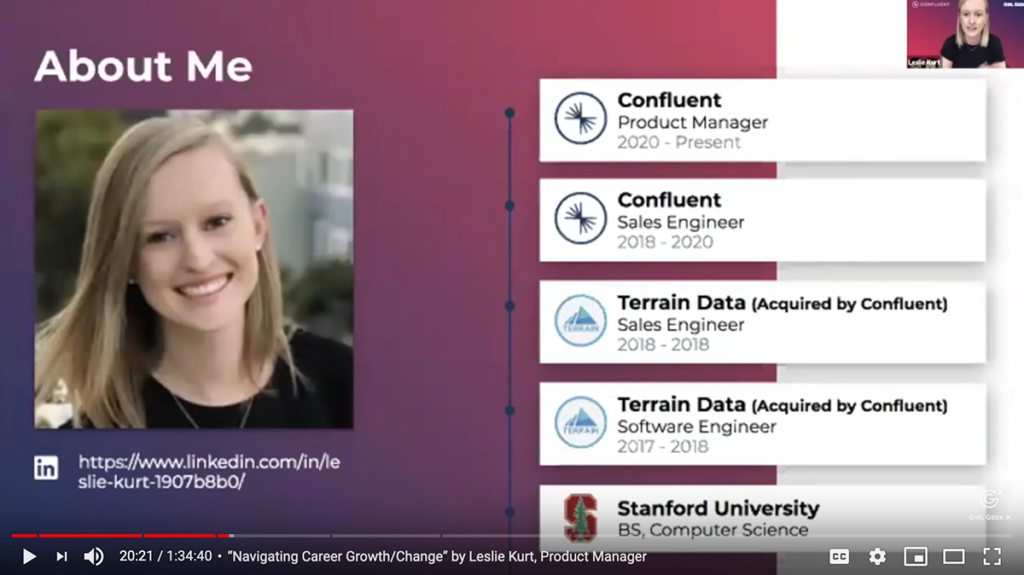
Leslie Kurt: Awesome. Well, hello everyone. I am Leslie Kurt and I am a product manager here at Confluent. A little bit about my background. I have worked at two different companies, and I’ve had two different roles at each company. My bio really tees up my presentation today, as I will be talking about how to navigate an internal career transition. Specifically, I’m going to talk about my most recent internal career transition, where I moved from a sales engineer to a product manager role here at Confluent.
Leslie Kurt: First off, I want to provide a little context and background as to what motivated my internal transition. Both times that I made a career transition it was based on what day to day activities made me the happiest at the end of the day. Throughout my career, I have periodically and consistently checked in and asked myself the following questions. What makes me happy? What do I want to learn? What am I good at? What challenges me?
Leslie Kurt: Every couple of months, I would sit down and write down all the projects, interactions, tasks, that answer these questions for me. As I started to compile this list over time, I realized that this list of things really answered the question of what career path should I take for me?
Leslie Kurt: If I think back to where I was about a year ago today, I recall some of the things that helped lead me to want to make this transition from sales to product. I had learned that I really liked talking to customers, and working with new technologies. I knew that one of my strengths was my empathy, and advocating for customers. I knew that I liked solving problems and figuring out how to make a solution work for a customer, but I was also really interested in improving the product and how to influence the direction of the product to improve the experience for the customer.
Leslie Kurt: I also knew that I missed building things from back when I was a software engineer, and I wanted to figure out a way to incorporate that back into my day to day. As I looked at these individual pieces, I realized that these types of activities described the day to day role of a product manager. I realized that it might be time for a career transition.
Leslie Kurt: Before I made any rash moves to change my career path, I wanted to make sure that this was the right move for me. I decided to dip my toes in the product manager pond. I did this by finding more ways to interact with the product managers in my company.
Leslie Kurt: When a new product was released, I would reach out to the PM who had launched that product, and ask them questions on what it took to build that product, what types of decisions and trade offs they made, and what their role was in the release. I even collected some customer feedback from some of our different products and presented it to a few product managers to try to put myself in their shoes and see if this was the right role for me.
Leslie Kurt: After observing, and even trying out some of these day to day activities of a product manager, I reflected on the experiences I had had. I sat down again and asked myself the same four questions from before. What makes me happy? What do I want to learn? What am I good at? What challenges me? It was also important, at this point, for me to reflect on if I wanted to make the transition within Confluent, or if I wanted to join another company. For me, I really loved the company culture here at Confluent and the direction I could see the product going.
Leslie Kurt: I also had a good understanding of the culture of the product team here. I could see myself fitting in well with that team. After reflecting, it became pretty clear to me that this role, product management, was what completed my puzzle, and that I knew that I wanted to stay at Confluent. So I decided to make moves towards an internal transition.
Leslie Kurt: The first thing that I did was talk to my manager. This wasn’t and isn’t an easy conversation, but I knew that transparency was key when navigating an internal transition. A few tips in bringing up this conversation are, one, expressing interest early. As I was dipping my toes in the product manager pond, I let my manager know that I liked working closely with product management. I liked completing this feedback loop between our customers and the product team.
Leslie Kurt: Second, is that internal transitions are beneficial to the company. My experience on the sales team would help provide a unique and valuable perspective to the product team. Third, it was important for me to reassure my manager that having a seamless transition was a priority to me and that I was willing to put in the work to ensure that the team was left in good hands.
Leslie Kurt: Now that I had talked to my manager, it was time to reach out to my network within Confluent and express interest for the new role. But after expressing interest, I realized that it was also important to be patient. With internal transitions, timing was everything.
Leslie Kurt: My goal was to put myself out there so that if and when an opportunity arose, I would be the first person they would consider for a job. After a period of time, I was lucky enough that a position opened up. I went through the application and the interview process, just like any other candidate. I will caveat that interviewing for a position with coworkers you already work closely with is a bit strange, but all in all, it went well. I was offered the job.
Leslie Kurt: Now, it was time to figure out how to make the transition seamless. I had promised my manager that was a priority for me, and it was. One thing that helped me a ton in this process was having a hard stop on my role as a sales engineer and a clear start date for my role as a product manager. I wanted to provide my best self to both teams. I realized that I couldn’t have one foot in both roles and still provide my best work. I negotiated a start date that would provide me enough time to wrap up loose ends and train my replacement on the sales side so that when I started my first day on the product team, I could really hit the ground running and devote all of my attention to the new role in my new team.
Leslie Kurt: One problem I had not foreseen was the difficulties I would have adjusting to the new role. Over the last two years, I had known myself as, and other people had known me as a sales engineer. Then, one day, thanks to my hard transition date, I showed up and was now a product manager. I found myself continuing to play the sales role, just now, on the product team. I thought like a sales engineer. I asked sales questions, and I was constantly putting myself back in my old role. While this was a potentially valuable perspective on my new team, it was not allowing me to embrace the new role. I realized that I really had to reframe the way that I thought about problems, so I watched other PMs on my team and how they thought about problems, phrased questions, et cetera, in order to reprogram my brain for the new role.
Leslie Kurt: Lastly, internal transitions are not easy. I could not have done it alone. I was extremely fortunate to have many coworkers and friends, willing and available to provide me advice, guidance, and reassurance during this process. So thank you to Brandalyn Powell, who had navigated an internal career transition at Confluent before me and provided endless advice on how to navigate the transition. Thanks to Dani Traphagen, who was a mentor to me from day one at Confluent, and has continued to be a mentor to me after the transition. Thanks to Larry McQueary, who was my sales engineering manager, for being supportive in helping me pursue the career that I wanted, and to Mike Agnich, who really helped me navigate the product management process and transition. With that, thank you, everyone, for listening. It’s been a pleasure to speak with you all today.
Angie Chang: That was really great, Leslie. That was, I think, really illustrative of how someone can advocate for the role that they want and then get the right help that they need to get there. We had some questions about, for example, how would you advise a Girl Geek on finding the support within the company, or, if not within her company, if her manager says no, how can this person still be able to gain the skills that they need to become a product manager or a different job?
Leslie Kurt: Yeah. I think when I was looking for people to provide advice and mentorship during the internal transition, I looked for, one, mentors that I’d already had in the company. I think building those up from the day that you start is important so that you have them available to you when you need some guidance. The other thing I did was, I looked for other individuals within Confluent who had actually gone through the process before so that I could really understand the inner workings within Confluent and what that process looked like.
Angie Chang: Cool. Awesome. Thank you so much. We’re going to move on to our next speaker, Victoria. For anyone, who’s curious, please use our Q&A feature. It is a little button down below that says Q&A. You can ask a question to our speakers. You can upvote them so that we get the best questions out of the crowd, and we can ask the speaker for you. Let’s see, where is Victoria?
Victoria Xia: Awesome.
Angie Chang: Great.
Victoria Xia: Let me pull up my slides here.
Angie Chang: I’ll introduce you. Victoria hopes to encourage open conversation by sharing her experiences and counter-tactics she’s found helpful in combating negative patterns of thinking, a common phenomena of imposter syndrome. Welcome, Victoria.
Victoria Xia: Thanks, Angie. Can you see my slides?
Angie Chang: Yes.

Victoria Xia: Awesome. As you now know, my name is Victoria. I am a software engineer at Confluent working on the event streaming database, ksqlDB.
Victoria Xia: My freshman year of high school, I somehow made it onto the varsity tennis team where I was the worst player by a noticeable margin. I was frustrated with my performance and didn’t enjoy the sport as a result. I also felt out of place on the team, since my teammates had all been playing for many years, whereas I’d only learned recently. I felt like I was pretending to be someone I wasn’t. After a particularly rough practice session, where it seemed as if less than half of my shots went in, I shared my frustrations with my coach. His response was, “Hey, remember when you started? Almost none of your shots went in.” I said, “Gee, thanks. That makes me feel a lot better.” But sarcasm aside, he was right.
Victoria Xia: I’d been so caught up in my current performance. I’d forgotten how far I’d come. I’d forgotten to enjoy myself along the way. What I learned from this first exposure to imposter syndrome is that if you’re a perfectionist like me, you’ll never be satisfied with where you are, but that doesn’t mean you need to beat yourself up over it. Don’t forget to step back, look holistically, and acknowledge your strengths and the progress you’ve made in addition to seeing your weaknesses.
Victoria Xia: Fast forward to 2018, a couple of weeks before my master’s thesis deadline. I was frantically assembling plots and turning outwards when I learned that the startup I’d signed a full-time offer to join after graduating, had been acquired by a company called Confluent. That was the first I’d heard of Apache Kafka or event streaming. I was unsurprisingly behind the curve when I started at Confluent a few weeks later. It didn’t help that this was before Confluent’s first new grad recruiting season, which meant I was the only new grad engineer at the company.
Victoria Xia: It was intimidating to be surrounded by people who knew more and had more experience than me, but it was also an amazing opportunity to learn. I was lucky to have a manager who emphasized the importance of focusing on learning, rather than feeling pressure to get things done. He explained it’d be better for both me and the team in the long run if I took things slow and ramped up on solid foundations, rather than rushing to get things done with partial understanding. He couldn’t have been more right. I eventually ramped up.
Victoria Xia: Things got better, before taking a turn for the worst. Because Confluent was doubling in size each year, that meant, when I was less than a year out of school, I’d already been at the company longer than half the other employees and was seen as a veteran, though I definitely didn’t feel like one. I felt like tasks that took me weeks could have been done by any of my teammates in a matter of days and found myself working long hours in an attempt to make up for the difference. My manager said I was doing fine. I wanted to believe him but found it hard to accept. It turns out these thought patterns are common enough to have a name, the imposter cycle.
Victoria Xia: The cycle starts with a task or anything on which our performance may be measured. This triggers worry and typically leads to either procrastination or over preparation. Once the task has been completed, we reject any praise or positive feedback, dismissing it as luck or something else outside our control, which allows us to repeat the cycle with the next task. To break the cycle, we first need to realize it’s happening in order to stop encouraging thoughts like, “What if I disappoint?” and, “I just got lucky this time,” and instead accept our accomplishments and say, “I can do this,” knowing that it’s okay and totally normal to sometimes slip up.
Victoria Xia: Additionally, the most effective countermeasure, in my experience, is sharing how I’m feeling with others and realizing I’m not alone. One day, during lunch at the office, pre-COVID, of course, I ran into a friend on a different team who was a few years older than me. As we caught up, I was amazed to learn she was feeling all the same things I was. Perceived pressure to deliver, even though her manager said otherwise, feeling behind her more experienced peers, and working longer hours as a result. I couldn’t believe someone I so admired, and looked up to, shared my insecurities. I felt suddenly more okay with myself and was able to break the imposter cycle in doing so.
Victoria Xia: A big part of imposter syndrome is feeling alone, but we can counter that by finding friends, family, and colleagues to serve as personal cheerleaders who we can share our feelings with. Unfortunately, imposter feelings can be hard to talk about, since at its heart is the fear that others will realize we’re frauds. Sharing our insecurities feels like it might contribute to that, but personal cheerleaders help overcome this by making us feel safe and not alone.
Victoria Xia: So to recap, overcoming imposter syndrome starts with identifying what’s happening. A few weeks ago, I received an email asking whether I’d like to give a lightning talk, with the Confluent Girl Geek X event. I was excited, but also a bit apprehensive since I couldn’t think of a topic I felt qualified to talk about, particularly to an audience with more industry experience, tech experience, and life experience than me. I fought these doubts by thinking about my strengths and choosing a topic I feel strongly about and reframed my fear of failure as an opportunity to expand my comfort zone and grow. Rather than worrying about audience members being disappointed, I focused on the fact that if my talk helps even a handful of people overcome imposter syndrome, then that’s wonderful.
Victoria Xia: Of course, I shared how I felt with my friends and with the event organizers too. Their validation gave me the confidence to be here today, which I’m extremely grateful for, since one of the most harmful consequences of imposter syndrome is to cause us to give up opportunities we might otherwise take. That said, while these strategies for beating the imposter are powerful, they also have their limits. If you find yourself in a toxic environment, where those around you put you down or belittle you, it’s better to address or leave the situation than focus on internal reframing. Additionally, it may be prudent to seek professional help, especially if your physical or mental health are suffering.
Victoria Xia: To sum up, focus on your own progress and growth rather than comparing yourself to others, watch out for the perfectionism trap, and remember that imposter syndrome is common when starting something new, or if you perceive yourself as different from those around you in any way. Acknowledge your strengths in addition to your weaknesses, reframe intimidation and fear as learning opportunities and chances to grow, know that it’s okay to mess up sometimes, find personal cheerleaders to talk to. Remember you’re not alone. Go grab that opportunity you’ve been wanting to take. Thanks.
Angie Chang: Thank you, Victoria. That was an excellent talk on imposter syndrome and breaking out of that cycle. We do have a question for you from Puja. She asks, “Do you think imposter syndrome is mostly seen in women?” She relates to this feeling. Most boys around her know less but are very confident.
Victoria Xia: Funny that this is asked, actually. In digging into this talk, I did look at the academic research. It’s pretty split. Earlier studies suggest that imposter feelings are more common in women. More recent studies are more ambiguous about it. In terms of my personal experiences, I think, for me, it’s any time I’m in a situation where I feel like the odd one out. That could be being in tech, in an industry that is male-dominated, it makes total sense for women to feel more this way, or in situations where it’s hard to point to leaders or success stories that look like me. Again, it’s depending on the industry. It makes a lot of sense.
Angie Chang: For sure, I think you had the example about the tennis. When you played tennis, was it girls’ tennis?
Victoria Xia: It was girls’ tennis, yeah. In that case, the reason I felt different was just because I was new to the sport. It was definitely an internal feeling rather than my teammates making me feel different or anything like that. That was enough to trigger it.
Angie Chang: Well, thank you so much for sharing your story. It seems to really have resonated with a lot the girl geeks in the audience. I think we have time for one more question. Someone asked, “Would you suggest sharing your feelings with coworkers, managers, or people on your team? Why or why not?”
Victoria Xia: I think my metric is just whoever I’m comfortable with. I have my go-to friends and family members, of course. If I have friends at the office or people who I can trust to understand where I’m coming from, rather than to misinterpret, or even worse, accidentally spread information that I wouldn’t want to be spread, then I find that those are great people to talk too. I guess my advice there would be to trust your instincts. I think we tend to have pretty good reads on who’s trustworthy and who we want to open up to. If you think someone’s trustworthy, then I’d say give it a shot, even though it can be scary to talk about.
Angie Chang: Thank you. Let’s see. I think that’s all the questions we have time for. Thank you, Victoria, for joining us and giving us a great talk. Now, we will be moving on to our next speaker.
Sukrutha Bhadouria: Thank you, Angie. Evelyn Bayes is our next speaker. In terms of a quick intro, Evelyn will share her many experiences of coming out, the benefits of living an open life, and some helpful strategies to achieve it. Welcome, Evelyn.
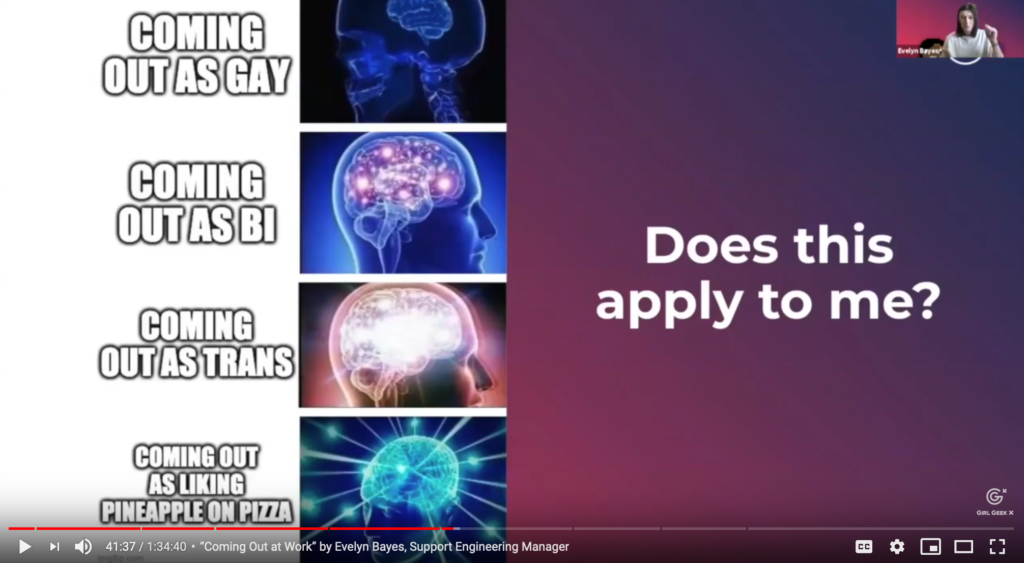
Evelyn Bayes: Hey, thank you. My talk is “Coming Out at the Workplace”. A little bit about me, I’ve been at Confluent for roughly two years now, in the last year as a manager. Prior to that, I was with a mobile service provider named Instaclustr, and then Accenture before that. No formal education as a software engineer, but instead I taught myself after taking a related class in the last year of uni.
Evelyn Bayes: If you’re not LGBT, you might be wondering, “Cool topic, but this doesn’t apply to me.” But actually, most people go through a coming out experience at some point in their life. Some people go through many, and plenty of these happen at the workplace. For one person, their coming out experience might be letting their boss know that they suffer from mental health issues. For another, it might be telling a colleague they’re dealing with domestic violence. These coming out experiences have different subjects, but the reason for people staying silent and coming out are often very similar.
Evelyn Bayes: In this talk, I’d like to share some of the lessons learned on coming out from the queer community, why you should consider coming out, and how these lessons learned can be applied to your situation. Before we get into things, I thought I’d share a few more details that my About Me left out. First, I’m bisexual. Second, I’m transgender. Third, I suffer from major depressive disorder. These are all things I’ve had to come out about at some point, sometimes more than once. Granted coming out as transgender felt like a bit of a bigger deal at the time, but I think coming out gets easier the more times you do it. Either way, I’ve learned from my mistakes. I’d like to share that experience with you.
Evelyn Bayes: Now you know that coming out is something that applies to you, you might be thinking, “Okay, why should I come out though?” Well, first, you’ll feel better. I’m not saying it’s easy, but I can say, at the bare minimum, you’ll feel free. Free of the burden of keeping a part of you and your experience secret. Second, and more importantly, you’ll have access to support. Many workplaces have a number of policies and resources in place for people going through a range of life experiences. These include provisions for carers leave, access to counselors, heck, my partner gets gender diversity leave that covers things like dealing with paperwork associated with transitioning, surgery, and a range of other things.
Evelyn Bayes: Third, you’ll have access to community within the workplace. I personally know at least two other trans women at Confluent. No one else is going to get my weird pickle jokes. I swear. It’s a thing. Ask a trans girl. Finally, there’s pride. Pride in being out. Pride in being visible. Nothing beats knowing you’re the reason someone felt safe to speak up. Safe to be themselves. Safe to seek help. This happens more than you’d think. I’ve been on both ends of this. Earlier this year, I had a girl reach out to me a few months after I gave a speech at Accenture. My own experience of coming out as trans, it had given them their own courage to begin their own journey coming out in the workforce. You’ve been listening to me ramble for a bit. Now, we’re at the crux of it, so let’s keep it short.
Evelyn Bayes: Step one, find resources. You’re going to want something short, a good one-pager on the subject of your coming out experience. You’re going to want to be able to link people to it on demand. What’s pansexual? Is that someone who loves pans? Link. What are your pronouns, or what are pronouns? Link. What is it like being someone who suffers from whatever? Link. Nothing is more cruel than the burden placed on people going through these coming out experiences, than the expectation that they educate every man and his dog on the topic. Don’t do it. Make them teach themselves.
Evelyn Bayes: Step two, find an ally. This might be a favorite work colleague, a manager, or someone who just feels safe. I, personally, stress seriously considering anyone with the phrase “diversity and inclusion” in their title. Those people kick ass. My all-time biggest coming out success was with my friend and colleague, Rachel. She was with me every step of the way. She fought so many of my battles. Today, she advises on global policies for gender diversity at Accenture. Rachel’s a rock star.
Evelyn Bayes: Step three, create a plan. A plan can be as simple as a few dot points to discuss with your manager, or as complex as an organization-wide email followed by an instructor-led educational session for your team with a Q&A, while you take a much-needed vacation, but a plan is vital. Also, that is legit what they offered me at Accenture and so much regret for not taking it.
Evelyn Bayes: Step four, do it. But in case you still need a little inspiration or you need to see it in a practice, on top of being bisexual, transgender, and suffering from major depressive disorder, I’m also non-monogamous, sometimes referred to as polyamorous. For me, that means I’m in a loving relationship with my partner, and also with my other partner, both of whom have other loving relationships of their own. If you want to know more about non-monogamy, I suggest checking out www.morethantwo.com. In particular, I’d suggest checking out their frequently asked questions page. For anyone working at Confluent, please feel free to talk to Sam Hecht. He’s been given the rundown. Have a lovely day. Everyone and good luck with your own coming out experiences.
Sukrutha Bhadouria: Thank you so much, Evelyn. When you get the chance, you must read the comments, some really, really amazing comments. I want to just read out one that says… Kathy says she’s watching with their eight-year-old daughter and 11-year-old non-binary kid. They’re finding this really helpful too. The 11-year-old plays hockey with mostly boys, so related to a lot of what you spoke about. Thank you. This has been helpful.
Sukrutha Bhadouria: And for people who want to be allies as well. So we have one question from Elizabeth. Evelyn who were some of your champions in coming out at work? How did your manager support you? I think this will be helpful for us to know how to support our colleagues and coworkers?
Evelyn Bayes: Yeah. So first of all, my friend, Rachel that I mentioned, so she worked with me on my first job at Accenture and she was actually the first person I came out to out of anyone, not just in the workforce, as trans. And so she, like I said, she fought so many battles for me. She represented me in so many different ways, helped me some steps through it. But in other places, I think Confluent’s probably a good example. With Confluent, I guess I never felt the need to come out as trans. it’s just I’ve always been very open about being trans and the big things that they do is they just, they support me when people get pronouns wrong or things like that. And it’s really just normalized, but a good example would be coming out as non-monogamous to my boss, which was quite a scary experience.
Evelyn Bayes: And he was the first person I came out to at Confluent, but was just generally supportive. And when I told him about this, he was thrilled about it. And he’s also just stepped up as the executive or one of the executive sponsors of the LGBT inclusion program as part of a Confluence diversity and inclusion program. I’m not sure if I’m getting the wording on that right. But I think a lot of people are just, they’re ready to step up and be supportive. People will amaze you. Probably my favorite story is and I’ll try and keep it really quick.
Evelyn Bayes: When coming out at Accenture, I remember having this colleague who was devoutly Muslim and would pray morning and evening and afte. I came out — at the time, it was so uncomfortable because I was a bodybuilder and had just gotten rid of my beard. And it was a pretty traumatizing experience, but he came up to me and took me aside and said that if I ever needed anything, he was always available and there to be supportive and people really care.
Sukrutha Bhadouria: Oh, that’s lovely. Someone else commented that they’re non-monogamous. So definitely when you get the chance please do take a look at the chat. So many good comments for you. Quickly, one last question. What is something you think people shouldn’t ask or shouldn’t say? What’s the one thing that people ask you and you feel like, “Oh my gosh, don’t.”
Evelyn Bayes: There’s always one with everything. Like I said, I got that question. When I came out as pans, like pansexual to colleagues. I remember them joking about pansexual being people who are attracted to pans. I’ve had a lot of people… The big one for me, which always blows my mind, is when people ask me about what I’m going, what surgeries I’m going to go get with my body parts. And I’m like, it is no more appropriate for you to ask me about my genitals as it would be for me to ask you about your genitals. So you start. But I think just asking for good educational research and doing the research yourself is good. There’s so much burden placed on people when they’re coming out. And it’s so unfair to get these questions all the time.
Sukrutha Bhadouria: Of course. Yeah, definitely. So I had a feeling that’s what you would say when I asked this question. So thank you so much, Evelyn, for your honesty, for the education you just provided. All right. So thank you. That was a great talk.
Evelyn Bayes: Absolute pleasure.
Sukrutha Bhadouria: So up next.. What you would have seen as in person getting off the stage and getting on the stage is what you’re seeing right now. Our next speaker is Candace. Blackfluent is the name of the Black and African American community Slack channel at Confluent. Candace and other black employees are taking it to employee resource group status, which is awesome. Welcome, Candace.
Candace Garton-Mullen: Thank you. Can everyone hear me? Wonderful. So as you can see here, hopefully on my screen. I am the Executive Business Partner, which most of you know as executive assistant and I work with Roger Scott at Confluent. Which you can see here on this next slide. I’ve been a business partner to Roger Scott, starting at New Relic. And now at Confluent for the last few years, I’m not…
Sukrutha Bhadouria: Candace, sorry to interrupt. We can’t yet see your slides. You need to share your screen.
Candace Garton-Mullen: Oh, so sorry. Let me go backwards. I’ll share my screen. And there we go. Now, can you see my slides?
Sukrutha Bhadouria: Yeah. I can see your slides now.

Candace Garton-Mullen: Wonderful. Okay. Moving forward then. This is the slide that I’d gotten to was talking about my partnership with Roger Scott. I will, again, be back to this slide later on. So I’m going to move past that.
Candace Garton-Mullen: First, I think it’s important to explain what Blackfluent is. In the literal sense. The word is a combination of ‘black’ and ‘confluent’ as a result of the company name. Plus the focus group name. To me personally, it means how to speak to your black colleagues, peers, and community members. Taking you back to the beginning of my journey. This is my very first day of kindergarten in 1984. That’s my mom and my almost four year old little brother helping me onto the bus. My father was taking a photo.
Candace Garton-Mullen: After stepping on the bus. I looked for a place to sit down and for the first time in my life, I heard the utterance of this word… A little boy called Danny was the little boy who spewed the word at me and caused me to wander up and down the aisles of the bus. Very much like the scene from the beginning of Forrest Gump, I eventually ended up sitting in the front seat, which was reserved for students with disabilities, which I didn’t know at the time. I sat next to a young man called Eric that had mild form of cerebral palsy. Eric was my first friend and he taught me a lot about humility in the years to come.
Candace Garton-Mullen: After school that day I went home, told my parents what happened, which prompted what we call ‘the talk’. ‘The talk’ is the formation of what becomes a natural understanding of the way that the world works when you’re a child. A world that our ancestors were thrust into and that we inherited.
Candace Garton-Mullen: This creates a dynamic in which we culturally were taught, what was expected and proper of us to blend in a white owned world. In other words, we are all ‘whitefluent’, regardless of if we choose to behave in a manner that shows that or one that potentially helps us in the world, we are taught and aware of how we need to behave should we decide to.
Candace Garton-Mullen: Moving along to my journey to high school. This is Hudson high school in Hudson, Ohio. Hudson is a small middle class, upper middle upper class suburb in Ohio, which is extremely similar to the dynamic of Palo Alto. If you’re from California. You can see by the demographics taken from the year 2000 in the upper right hand corner, that I was the literal minority in my high school. Especially at that time in 1997, when I went. Specifically, you can see me swimming in the sea of my senior classmates.
Candace Garton-Mullen: And if you can’t find me yet, I’m right there. More importantly on the day that this picture was taken, it’s the same day that everybody signs yearbooks, passes around school pictures and hopefully gets one from their crush. I received one from someone who is not my crush, but I think I might’ve been his. Kyle passed me this picture at the end of homeroom. On the last day of school and disappeared before I had a chance to process the PS. “I’ve always wanted to tell you that you’re super pretty for a black girl.” I know what Kyle was trying to say. Unfortunately, the veiled insult in the comics took precedence even in my 18 year old mind. Kyle was definitely not Blackfluent. At the time. I didn’t realize how desensitized I was to things like this, because it’s just the way that things have always been.
Candace Garton-Mullen: After high school, college, and a decade in the legal field in Ohio. I moved to San Francisco. When I arrived. I leaned on the same tools that worked for me in Ohio. I learned that I was able to move forward really quickly and blend, as many of us do, if I wear my hair straight, instead of curly. These quotes were taken from an article written in 2013. So you can imagine how much more applicable they were in the eighties and the nineties. The fear of wearing my hair in its natural state of curls in corporate America was really real. And as I mentioned, it followed me to the bay area wherein I wear my hair straight for every interview. And for the majority of my 10 years at Salesforce, Lyft, and Ripple. It wasn’t until I arrived at New Relic and began working alongside of Roger Scott, that I was encouraged to bring my authentic self to work. And then again, encouraged to bring that same authenticity with me to Confluent.
Candace Garton-Mullen: I’m very thankful to Roger and to New Relic in general, either way. When Roger asked me to join him at Confluent, I was extremely nervous that I would be sliding backwards into the blending. But a few weeks after joining the company, I was approached by the head of diversity and inclusion team and asked about the possibility of forming an employee resource group. Now known as Blackfluent. Within those efforts. Our newly forming resource group came up with the following mission statement. The mission statement is to grow and empower the black communities within and outside of Confluent while fostering meaningful action from allies.
Candace Garton-Mullen: We want to promote understanding through community engagement. Promote awareness through professional development. Demote discomfort through encouraging a sense of belonging. Demote misunderstanding through allyship. Offering a safe space to engage. And some of the ways we plan to do this are through the Executive Sponsorship using our executive sponsors and their connections to get the things that we need to make this group work for us and for the employees. The equal opportunities in organizations with career counselors and such. Observing other mentorship programs from other companies to get ideas about how we can help the people in our company and grow inside and then outside, when they’re not even at work and community building and leveraging resources from previous jobs. It’s really important to the group, it’s leaders, and me specifically to create a space where any, and everyone can be Blackfluent, should they wish. And I look forward to working with my colleagues at Confluent to provide a space where they can do that, learn and grow and thank you all for your time.
Angie Chang: Hey, that was really awesome. Thank you, Candace.
Candace Garton-Mullen: Thank you.
Angie Chang: We have a question for you from Valerie. She asks ‘Do you like the idea of the word ‘Blackfluent’ becoming mainstream vocabulary because it’s such a positive word and fluent has a connotation of being well-read in a subject and fluent indicates someone that has taken the time to study the subject as opposed to generally getting it?’
Candace Garton-Mullen: Yes, absolutely. That specifically I came up with the word Blackfluent. So it means even more if it were to go mainstream because it’s like hashtag Blackfluent, my word, but also obviously the bigger implications of that being that it would be so great if we can make that a mainstream word that people use to represent that type of inclusion and the way that they can speak to their peers with comfort. That would mean a lot.
Angie Chang: Awesome.
Candace Garton-Mullen: Absolutely.
Angie Chang: Thank you, Candace.
Candace Garton-Mullen: Thank you.
Angie Chang: Great. And now we’ll be moving to our last speaker of the evening, Tejal. She will be speaking about being pregnant and networking. It can be hard, but being new at both is altogether a different ball game. So Tejal will be sharing her CPR technique to ease you through the bump and help you deliver like a boss.

Tejal Adsul: Oh, thanks for the awesome intro. Hi everyone I’m Tejal Adsul and today I’m going to share my journey of working while pregnant. So a little about myself. I did my undergrad from Pune University and Master’s from Arizona State with specialization in software security. And after graduation, I joined Intel and was pretty much working on securing data trust for solid state drives. And after working for a couple of years for a big giant, I was highly motivated to join a startup. And so I went ahead and I joined Springpath, but my startup dream was pretty short lived because we were soon acquired by Cisco and I was back with the big giants. And so now I joined Confluent, another startup, and I’m mostly working on platform wide security features for the conference platform.
Tejal Adsul: So as most of y’all must have heard the famous saying that be careful what you wish for you will get it, but be even more careful what you work for, for you will get it even more quickly. And I like to call it my year 2018 as my genie year, because it was determined to grant me all my wishes. Well, not all, but most of them. So when I was looking to join a startup in the year 2017, I joined for a software engineering position at Confluent. But unfortunately, by the time I applied, that position was already filled and I went ahead and joined Springpath instead. Luckily, in 2018, they had this position for platform security engineer. And as they were just forming a brand new security team, and I felt like this is a perfect opportunity for me because it’s in the domain of my expertise and the company I had been following for quite some time.
Tejal Adsul: So I applied, went through all the interview process, and joined Confluent in October. Now Mr. Genie then decided to grant me my second wish about the same time. And I came to know I was pregnant just after a month of joining Confluent. Initially I was super ecstatic, but soon my excitement was replaced with a lot of anxiety because I somehow believed in the stigma that pregnancy derails your career. And now I had to choose between the two, but as I was going through the entire process, I realized it’s not really choosing of one over the other, but finding the right balance between the two. And so I go in this technique, which I like to call a CPR, which helped me transition into a working mom. So the first daunting task, which most of us face, is how, and when, should I break this news to my manager?
Tejal Adsul: And honestly, my first gut feeling was, Hey, I don’t really need to tell them at all. Right? And if I start to show, I can just blame all the good free food they gave me at Confluent and no one will ever know, but then you have to pee like a freaking million times in a day and no exaggeration there.
Tejal Adsul: There is absolutely no way you can hide it. So I was so nervous wrecked that I decided to have this conversation with my manager pretty early on. I was almost just eight weeks pregnant and I just scheduled a quick one on one with him. And I just broke the news that, Hey, I know I just joined, but I am pregnant. And I was so surprised that he took the news so well.
Tejal Adsul: Rather he shared his own experience, as he was new to the parenthood as well. And that instantly put me at so much of ease. So this is one of my recommendations to all the moms to be. When you are comfortable, have this conversation with your manager and preferably early on and divide this conversation into two separate meetings. First, schedule just a quick meeting to announce the good news. So it gives them time to think through any concerns that they have, but most importantly, schedule a followup meeting in another two, three weeks so that you can gloss over your work plan, job requirements or your maternity leave plans, but be sure to be highly prepared for this particular meeting so that you can answer of any concerns that they might have.
Tejal Adsul: Being pregnant is like having a flu or being hung over all day every day. And this is especially true in the first trimester. So you cannot really work with a hundred percent of your capacity. So you have this limited energy and limited time before you go for your maternity leave. But most importantly, you have limited caffeine. So it’s highly crucial to plan how and where you want to put this energy into. And that brings us to the P in the CPR technique. And this is a very important lesson I learned during my pregnancy. And it took me some time to get into this mindset that you cannot do everything and you cannot do everything perfectly. And that is perfectly okay.
Tejal Adsul: So if you’re going to choose to do X, you are definitely going to miss out on doing Y. So for instance, I choose to do all these fill-ins or hard slogs. I am going to miss out on those quick wins and major projects. So what I did and what y’all should do is spend some time using this graph and try to analyze where and how you’re going to put this limited energy and time to achieve those quick wins and impactful project. And once y’all have wisely chosen your X, y’all can then use it in the conversation meeting, which we just discussed.
Tejal Adsul: Lastly, stress, nausea, those mood swings, all these are part and parcel of pregnancy. All you can do is embrace them and try to relax by consciously inculcating relaxation techniques into your day to day routine. So I used to literally schedule breaks after every two hours. And when I say schedule, I literally had them on my calendar and every time I got those pop up reminders, I would just stop working on whatever I was doing. And I would just listen to music or walk around the office or meet a friend on a different floor. And these 10 to 15 minutes of break would give me my energy back and it helps to improve my efficiency highly when I was actually working. And my biggest reward of working while pregnant is that I have this daughter who has intimate knowledge of Apache Kafka because we pretty much started our journey together. Thank you.
Angie Chang: Thank you, Tejal. That was a really excellent talk about delivering like a boss. We are going to now go into our Fireside Chat with Neha.
Neha Narkhede: Hi there. Can everyone hear me?
Angie Chang: Yes. Can you turn on your video?
Neha Narkhede: I’m trying that. Can everyone see me?
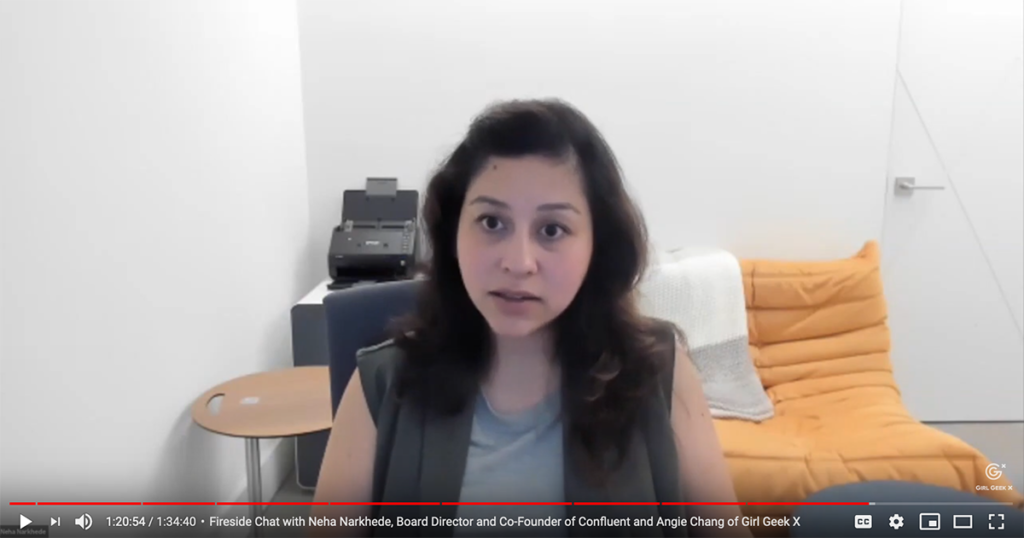
Angie Chang: There you go. Perfect. So I’m going to do a quick intro. So Neha is a Co-Founder at Confluent, the company behind the popular Apache Kafka streaming platform. She is one of the initial authors of Apache Kafka and a committer and PNC member on the project. So, Neha, why don’t you quickly give us a… am I missing anything in your bio?
Neha Narkhede: I think you did a wonderful job of covering it. I’m so excited to be here. First of all, thank you for inviting me into what is my favorite event of the year. Thank you.
Angie Chang: Thank you. We had such a good time.
Angie Chang: So our first question for you is what is the most overlooked obstacle for women when it comes to asking for a promotion? So what are the differences in promotions at startups versus medium and larger companies?
Neha Narkhede: Yeah, that’s a great question. You know, something that I’ve thought about at every stage of my career, it doesn’t seem to ever get easier. I’m not sure how overlooked this is anymore, but I think that a significant obstacle for women and minorities alike is the fear of being judged negatively for coming across as being too ambitious. You know, when you get ready to really advocate for yourself. And I think that this fear is actually rooted in some reality as well. In my observation, this obvious bias that normalizes ambition, advocating for yourself, for men, typically white men, and while expecting minorities and women to wait for the term or the right time.
Neha Narkhede: The other obstacle is that men tend to be assessed more on their future potential while women are assessed more in the past experience as has been shared by so many women leaders. And so it really isn’t easy to ask for promotions or advocate for yourself when you know that there are so many factors working against you. And so I just wanted to sort of share my own experience and say that it is okay to feel a little bit out of place. It was okay to feel all this fear because you’re not imagining it. Some of it actually does exist in varying proportions, in different cultures. I think the trick is figuring out how to ask for it, regardless, right? And so what I wanted to share is what has worked for me, other than being okay as being viewed as ambitious has actually been to navigate the communication around it carefully, right?
Neha Narkhede: Ultimately you have to have a productive conversation and actually a series of conversations to make the change happen. So I typically just write down what I want to say ahead of time, and have the best possible clarity. That gives me a chance to really rehearse what kind of objections might come through, what I really want to say, keeping the emotion aside of feeling the bias. Because there is very little opportunity, or very little appetite to hear that out. I also make it okay for myself, I think this is probably the most important thing that I had to train myself to do, is to actually be okay to hear “No” a couple of times before it finally gets to a yes.
Neha Narkhede: So just know that a “No” should follow with clear, actionable feedback that allows you to make progress. If you see a situation where consistently it’s, “No, but we don’t feel that you’re ready.” That actually doesn’t mean much and it’s probably time to move on, however hard it might seem.
Neha Narkhede: The other thing to say is most people, including myself, we didn’t really know how to negotiate. What’s the science and the art behind negotiation? So something practical that I wanted to share here, a book that really helped me learn about the secret of negotiation. It’s called, Never Split the Difference, Negotiating As If Your Life Depends On It. It’s literally written by an FBI negotiator. I find that it has a lot of practical advice on how to navigate this situation and many others. I hope that everyone else finds it helpful as well.
Neha Narkhede: The other question you ask, I think, is a little different. Where the differences in promotions and startups, versus midsize companies, versus large companies. I think it’s very important to realize the back of the field that you’re walking into. Startups are really chaotic. Startups don’t really have a process around much of anything, really. Career growth is just one part of the puzzle. It’s not that people, whether they’re managers, or executives, or founders, they’re not interested in it. It’s just it’s, it’s a matter of survival versus not. You’re really focused on something else. So I think knowing that the reason for not being able to have a structured conversation around this is not so much your own performance, it’s just that it’s a startup and it’s going to be a little bit harder to bring it up.
Neha Narkhede: The secret in startups to grow as what we shared is, to just take ownership of what needs to be fixed. That’s the secret to growth. As the startup grows and it goes through its own sort of teenage years, as I think some of the hyper-growth companies are, including Confluent. There is actually a process, there’s actually plenty of opportunity to have those conversations. It’s not perfect like the large companies, but I think there’s plenty of opportunity. I think the secret there, or the obstacle just is that it’s not evenly across the organization, however much you might like it. So you might find yourself in pockets of the organization where it’s just not ready for the new process that has been instituted, because the company is growing so quickly that no matter how well you tried, every policy is not evenly applied.
Neha Narkhede: There’s another chance to give the benefit of doubt to your leaders, your managers, your teammates, and yourself to actually go at it a couple of times and have a positive conversation. Like I said if at any point in time there’s a repeated lack of clarity, I think maybe it’s a time to reconsider whether it’s the right time in your career to be in that kind of work environment. Larger company is much more stable, a lot of process. Obviously there are trade offs, so more process and more stability also means probably fewer opportunities for step function growth in career.
Neha Narkhede: It’s really more of a balance. It’s so different, I’ve been at really, really tiny startups, I’ve been at hyper-growth companies, at LinkedIn when I wasn’t really a c -founder or anything like that, and large companies. I still think that as long as the company grows, you have plenty of opportunity for growth if you figure out how to navigate the situation and then a lot of persistence to fight it through.
Angie Chang: Absolutely. I agree that it’s a matter of asking and asking again and getting no. Then asking, “What do I have to do to get to that next level?” Then being persistent and then coming back with, “Well, I’ve done these things. Let’s talk about this again.” It’s one of the Girl Geek Dinners, last week that I hosted with a woman who everyone respected, was a director of engineering. She gave this great example of, every job promotion I’ve been given it, wasn’t given. I had to ask for it and show up with my list of the things I’ve done, and asked for it, and asked for it. So you have to be your biggest advocate, so definitely-
Neha Narkhede: Plus one. Always ask for it.
Angie Chang: Absolutely. So we get a lot of questions from the Girl Geek Community about technical interviewing. So I wanted to ask if you have a story that you could share that would resonate with our community, that finds technical interviewing extremely challenging or daunting to think about.
Neha Narkhede: Yeah, I want to start by sharing that earlier in my career when I had to get into this technical interviewing process, it was extremely daunting. It felt like the hardest thing to do, despite knowing how to code and knowing how to do the job. What I did is what I usually do when I’m presented with daunting experiences that I want to navigate anyway is, I over-prepared. I signed up for lead code and back then, that was the thing. Just went ahead and practiced and went ahead and over-prepared.
Neha Narkhede: Unfortunately, that’s what I had to do. So, what I want to share here is that, what I also did is give myself power in the situation. I changed my perspective from feeling like a victim of an obviously unideal situation, to taking control of it. By just realizing that how you’re made to feel in a technical interview process is really a reflection of the team, and the company culture you’re going to sign up for. Ultimately hiring is a two-way decision. I remember picking LinkedIn over another social networking site, and another file sharing company, simply based on the quality of my interview experience, and it worked out.
Neha Narkhede: Realizing that it’s your choice too, it actually just oddly gave me a lot of comfort. I do think that having been on both sides of the table, there are many things that need to change about technical interviewing. So that’s another thing to realize is it’s really not perfect, and it’s not you. It’s a collective effort that we all have to work towards. There many things that we were able to institute at Confluent that I think really worked. I think the first is just realizing and making a decision that it shouldn’t be an adversarial experience. It should feel like a collective brainstorming exercise that you want to do with the future colleague. So interviewers need to adopt a friendlier stance, you need to communicate with empathy, you need to challenge the candidate and vice versa, respectfully.
Neha Narkhede: The other thing we did was to institute a take-home exercise, which is literally the first step in the interview process. Because that gives you the best possible window into thinking, to understanding how a candidate works, as we all do. There’s no one watching over our shoulders when we’re writing code. So it’s kind of silly for that to be our whole entire experience. The other thing that this take home does is, it allows you to prepare for the unique onsite interview that that candidate needs. Because we all need to prepare. It’s not just the candidate that needs to prepare. We need to prepare as interviewers to come in and actually understand their perspective and creatability.
Neha Narkhede: The third is to leave enough time and opportunity for the candidate to ask you questions. I can’t stress that enough is, you actually learn a lot of valuable information about a future colleague by just studying the quality of questions they ask. It’s really not just bombarding the candidate with questions, and trickier questions, and laying down the landmines to kind of win that situation. We found a lot of success that Confluent started instituting these changes for technical interviews. I hope that technical interviews in general, in the whole industry change for the better. It’s really a situation that needs to change collectively. It’s not just what you can do.
Angie Chang: Absolutely. I have one more question and then we’re going to turn it over to the Q&A. For people who are tuned in from home, you can put in your questions in the Q&A feature and then people can upvote it if they like it, and will ask Neha a question from there. My final question is, and Neha, you’re such a good communicator, what are some advice you can share about interpersonal communication, or salary negotiation? What’s the piece of advice you want to leave us with?
Neha Narkhede: First of all, thank you. It did not come naturally to me. I wasn’t into all the inter-school debates and whatnot that train you to just be good speakers. So I want to say that it’s okay to start off as a shy introvert engineer like I was, and find yourself up on the keynote stage.
Neha Narkhede: Take every opportunity, however super uncomfortable it feels to be on that stage and speaking. So a couple of secrets is it’s so different, communication in one-on-ones, and communication in team meetings, and communication on stage is they’re entirely different, the way I found it, because I literally had to learn that on the job.
Neha Narkhede: Communication on the stage, a little secret I did want to share as we do all these sort of… There were many speakers here, and if this was a live event they would all be on stage, is… I’ve had the opportunity to speak to really celebrated speakers, and literally all across the board, the secret is great speakers, practice a talk about more than 10 times. You don’t have to do that, but if you find a speaker that you really like, and you think that they go up on stage and write the talk like three days before, they might’ve done that, but they practiced more than 10 times. That’s sort of the happy number.
Neha Narkhede: A lot of us have speaker notes, and writing the talk prior to giving the talk is the second secret. So you literally imagine what you’re going to say. It does not make you too rehearsed, it just gives you clarity of thought. Believe it or not somehow magically you go up on stage and you say all the right stuff, and you don’t forget, and you’re not nervous because you can see your speaker notes. Because all of us tend to forget something really crucial because you focus on someone who’s looking at you and then you lose your focus. So that those are some things to share about onstage.
Neha Narkhede: About negotiation, other than what I shared, which is I tend to resort to writing to get clarity of thought. I carry those notes with you, and will try to get my notes, and studying how to communicate.
Neha Narkhede: Another book, and I feel bad about just recommending books, but this is definitely widely accepted, this particular book called Crucial Conversations. That is just amazing in terms of having both hard conversations, as well as high stakes conversations, at work. It’s specifically written for at work situations. I just think that there’s a lot of value I found. I don’t think I’m great at applying all the different techniques used in the book, but I think it’s super valuable. A lot of executive and personal coaches do recommend that book. So you might as well get your hands on it without having to hire some fancy coach.
Angie Chang: Great. That’s an excellent recommendation to have notes, to use them, and to read that book. So we have a question, I think we have time for one question before we finish and go to networking. Someone asked that they have a strange case at work. Their company says they don’t have titles and there’s a flat structure. So how do they ask for promotion without sounding like they’re not conforming?
Neha Narkhede: Yeah. This is something that’s somewhat of an emerging culture, especially in engineering. There are pros and cons of this culture. On one hand it allows people to make their case and win arguments without using their title because “Hey, everyone is called software engineer.” So I wouldn’t know it if you’re three levels higher. It allows me and gives me a level ground. But at the same time, it’s hard to see yourself really grow, right? Really what does growth even mean? So sometimes, as companies grow and mature, what they actually end up with is they have internal levels so you know the expectation of every level, and a level really means growth and opportunity and responsibility. That really is the way to look at growth.
Neha Narkhede: It does not satisfy the ego, but you are so capable that when you go and look for your new job, you are ready for a much bigger job. That’s always the safest way to navigate your career is to just be so ready. So I think if there aren’t levels established in a company, despite what the titles say, I think it’s very important to advocate for that. I found a lot of value because when you’re put in that situation, we are thinking of what levels you have to think about, what are the expectations? Why would I say, “Hey, I don’t think you’re quite ready for that staff engineer level five promotion.” It doesn’t allow for those unsaid things to happen. So I like that is like a healthy balance between no titles and career growth.
Neha Narkhede: Having said all that no matter what the culture is in your company, I think it’s very important to ask for specifics. Really good leaders would carve out a roadmap for you to get to the next level. If you don’t have that, it’s going to be much harder. Like I said before, it’s something for you to think about on how long you want to continue in that environment. If this was really something you find value in. There’s no judgment, some people ask for promotions and that’s okay. You’re ambitious and you want to push yourself and you’re going to learn fast.
Angie Chang: Thank you, Neha. That was all really helpful advice and great book recommendations. I’m sure everyone’s writing it down and putting it in Amazon so they can get it shipped so they can read it, so-
Neha Narkhede: Oh, that’s great.
Angie Chang: We are going to be switching over to Elizabeth. Elizabeth is Confluent’s Head of Diversity, Equity and Inclusion. She would like to share a few words on Confluent’s commitment to increasing diversity of the workforce. Okay. Oh, hold on a second. I need to unmute. There you go.
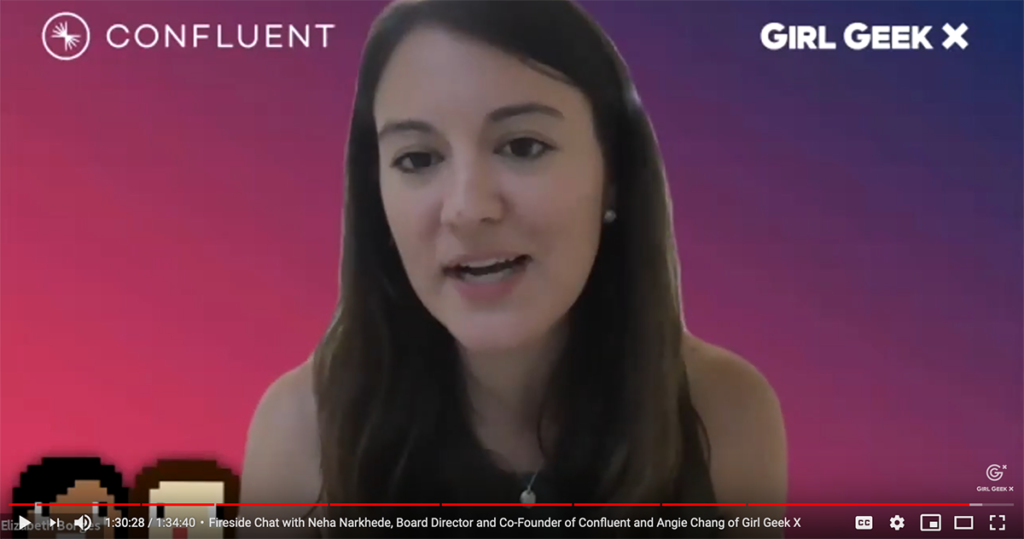
Elizabeth Borges: There we go. My first thing to share, piece of advice, if you ever get asked to speak at a Girl Geek event, don’t go last because there is no way that I can match any of the wisdom or the stories of the folks that’ve spoken tonight. So not going to try. Instead, I want to do two things quickly. Yes, we’ll definitely touch on a little bit of what we’re doing at Confluent from a DEI perspective. So first of all, just want to say thank you. Thank you to all of you for being here with us.
Elizabeth Borges: Thank you to our incredible speakers. I got a chance beforehand to hear some of the practices of the talks, but there’s something different about seeing it at the actual event. I definitely had to get some tissues for some of those. Just really appreciate the vulnerability and all of the wisdom that you shared. So happy you’re part of the Confluent Community.
Elizabeth Borges: I also want to thank all of the folks who are on the line today. You are actually helping us kick off our Confluent Kafka Summit, which starts tomorrow. I don’t know if it’s an official or unofficial Confluent Kafka Summit kickoff event. This is the second year in a row that we’ve done a Girl Geek Dinner the night before Kafka Summit. So we’re starting to get into a little tradition here that I hope that we maintain for a bit. I want to thank you all for helping be a part of kicking this off. As we think about our job at Confluent, our mission is to put an event streaming platform at the heart of every organization around the world.
Elizabeth Borges: As we think about being able to do that as a company successfully, we know that that’s going to take a commitment to diversity, equity, and inclusion. We need to, as a company, embrace and reflect the diversity of the global community, if we want to successfully bring that event streaming platform into organizations all around the world. As Angie mentioned, there’s a lot of great work that we’ve been doing over the past year at Confluent to help us get better at being able to realize that mission. You heard a little bit tonight from folks who mentioned employee resource groups, so internal communities of folks that serve people of different backgrounds within the organization. That’s Blackfluent, for example, like what Candace talked about. We’re also doing a lot in terms of training and starting to really talk intentionally about what it means to build an inclusive culture.
Elizabeth Borges: But I also want to point out that we want to connect with communities and folks outside of the company because we know that we can learn from you all as well. So that’s part of why partnerships, like the one that we have with Girl Geek are so important to us and part of why I’m so grateful having all of you be here tonight to help us kick off Kafka Summit. Then also celebrate diversity and inclusion and some of the amazing women from our community. So that’s first thing, very sincere thank you.
Elizabeth Borges: Second is, as Angie mentioned at the start of the event tonight, it is a unique time. I think we can all agree that 2020 is one for the history books. Obviously, we’re in the midst of a global pandemic. That’s why we’re doing this virtually. Those of you who are in California, I woke up this morning, there was smoke. It’s definitely a scary situation for many of us, given the wildfires here. There are natural disasters. I think I saw something about a hurricane coming to another part of the U.S. Then of course we’re experiencing all of this natural disasters, things that are happening out in the external world, on the heels of a very difficult summer. Having a much needed, but difficult, conversation about systemic racism and persistent racial injustice that exists in the U.S. So it’s a lot, there is a lot going on. I think at a time like this, it’s never more important to build a community, and to find people who you can be open and honest and vulnerable with.
Elizabeth Borges: That’s one of the reasons that we love partnering with Girl Geek. I think this is one of the only tech events where you can have somebody speaking honestly, and openly about coming out at work. Or having to run to the bathroom when you’re pregnant, or talking about what it’s like to grow up in Ohio as one of the few black kids at your school, and to be able to do that and be so supported. So as we are in the middle of a very difficult year, I just want to encourage all of you to continue to invest in this community.
Elizabeth Borges: We at Confluent are so excited to support it. Know that you’re also now part of our extended community at Confluent, and we’d love to stay in touch. So encourage you, if you can, to join the icebreaker afterwards. Definitely reach out to any of us who’ve spoken here tonight on LinkedIn. If there’s anything that we can do to further help you, or support you during this time. Thanks so much.
Sukrutha Bhadouria: Thank you so much, Elizabeth. That was great. So thank you to Confluent for sponsoring this dinner and making this happen.
Sukrutha Bhadouria: I encourage you all to move to icebreaker. The link is in your confirmation email. I want to give one last thank you to everybody who spoke at this event, and also to all the amazing people behind the event from the Confluent side. If you have any questions about how to get to icebreaker, please comment on the chat. I am hoping to see you all there.
Like what you see here? Our mission-aligned Girl Geek X partners are hiring!
- See open jobs at Confluent and check out open jobs at our trusted partner companies.
- Does your company want to sponsor a Girl Geek X webinar in 2021? Talk to us!


